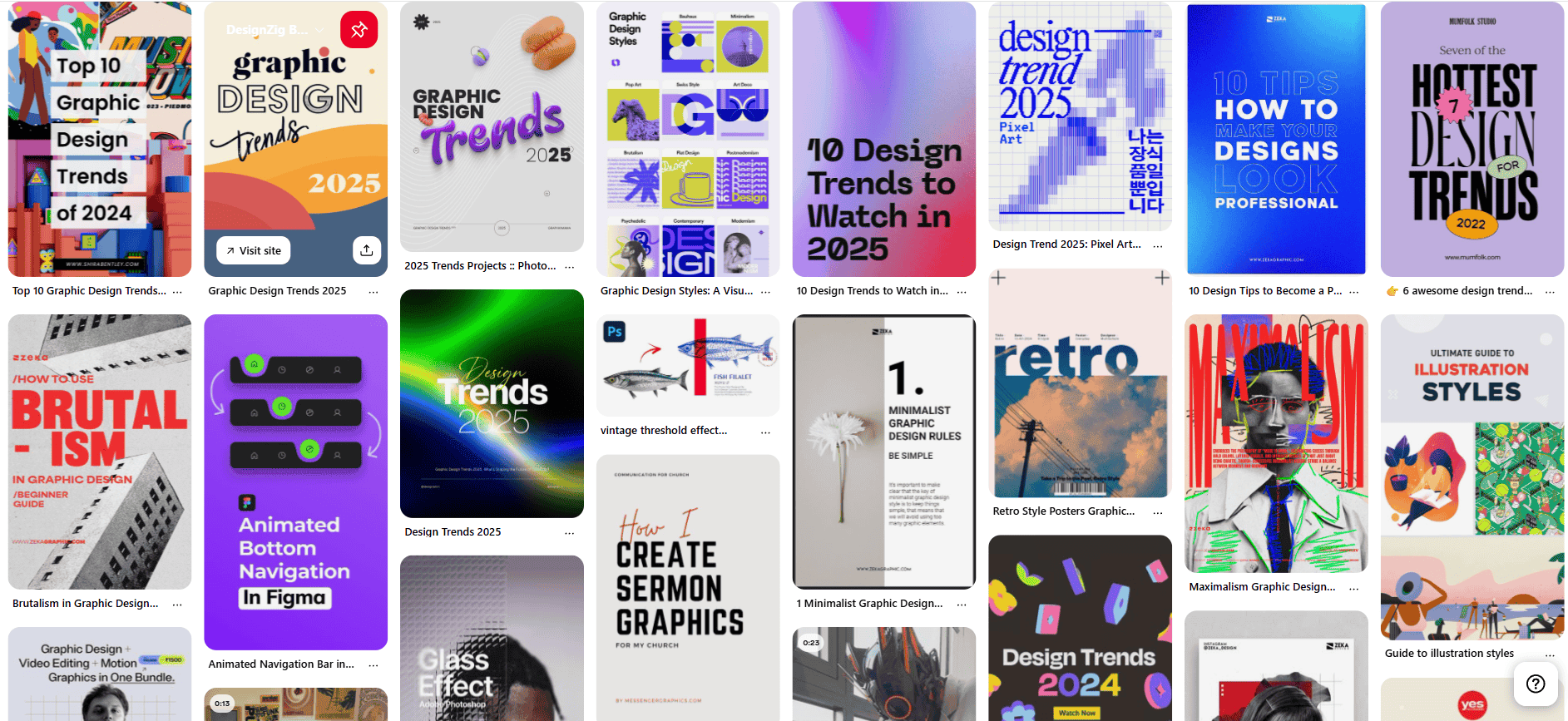Finally! 61 Secret Words to Describe ANY Design Style! with example
Ever spot a design that speaks to you—but when you try to find more like it, you have no clue what to search for? You scroll through Pinterest, Google, and mood boards hoping something clicks, but everything’s just close… not quite. It’s frustrating when inspiration is right at your fingertips but just out of reach because you don’t know the style’s name.
That’s exactly why we put this guide together.
Think of it as your personal design inspiration decoder—a master list of over 60 visual design styles, each with a clear description and vibe breakdown. Whether you’re a designer, content creator, or just someone chasing a creative spark, this isn’t just a list—it’s a launchpad. Once you can name a style, you can find it. And once you find it, your inspiration can actually flow.
So if you’re tired of blank searches and “almost right” results, let this be your creative compass. From dreamy minimalism to wild glitchcore, we’re about to unlock the visual language of design—and help you fill your mood boards with intention, not frustration.
Ready to get inspired? Let’s dive in.
Aurora
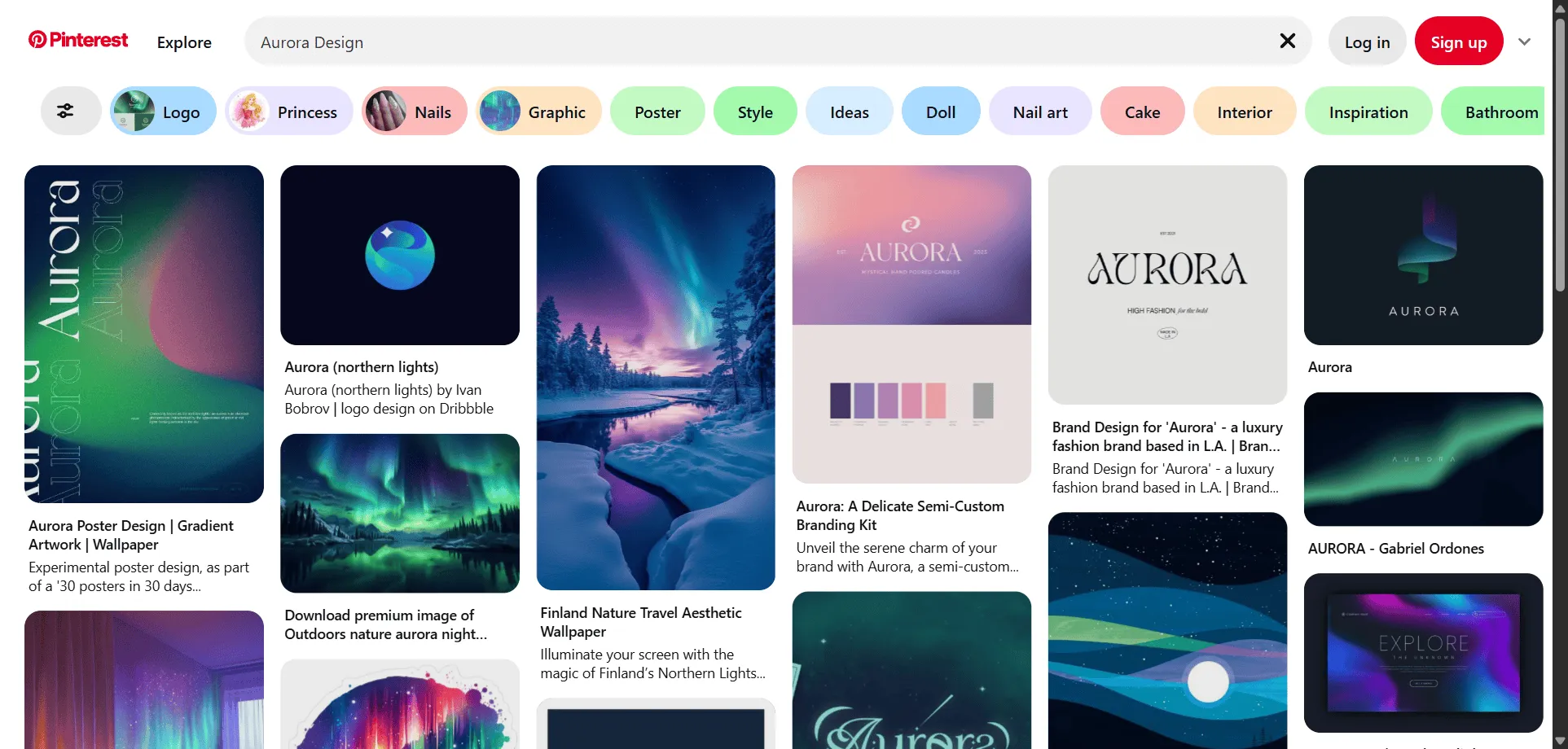
A modern aesthetic featuring luminous gradients with dreamy color transitions (purples, pinks, blues, greens), often found in digital art, UI/UX, and branding, resembling the Northern Lights. (Prominent in recent years, especially with digital design advancements.)
Coquette

Embraces soft, romantic aesthetics with delicate florals, pastel tones, lace, ribbons, and gentle silhouettes, creating a charming, playful, and flirty vibe. (Gained popularity on Tumblr in the early 2010s and TikTok around 2021).
Bento Grid
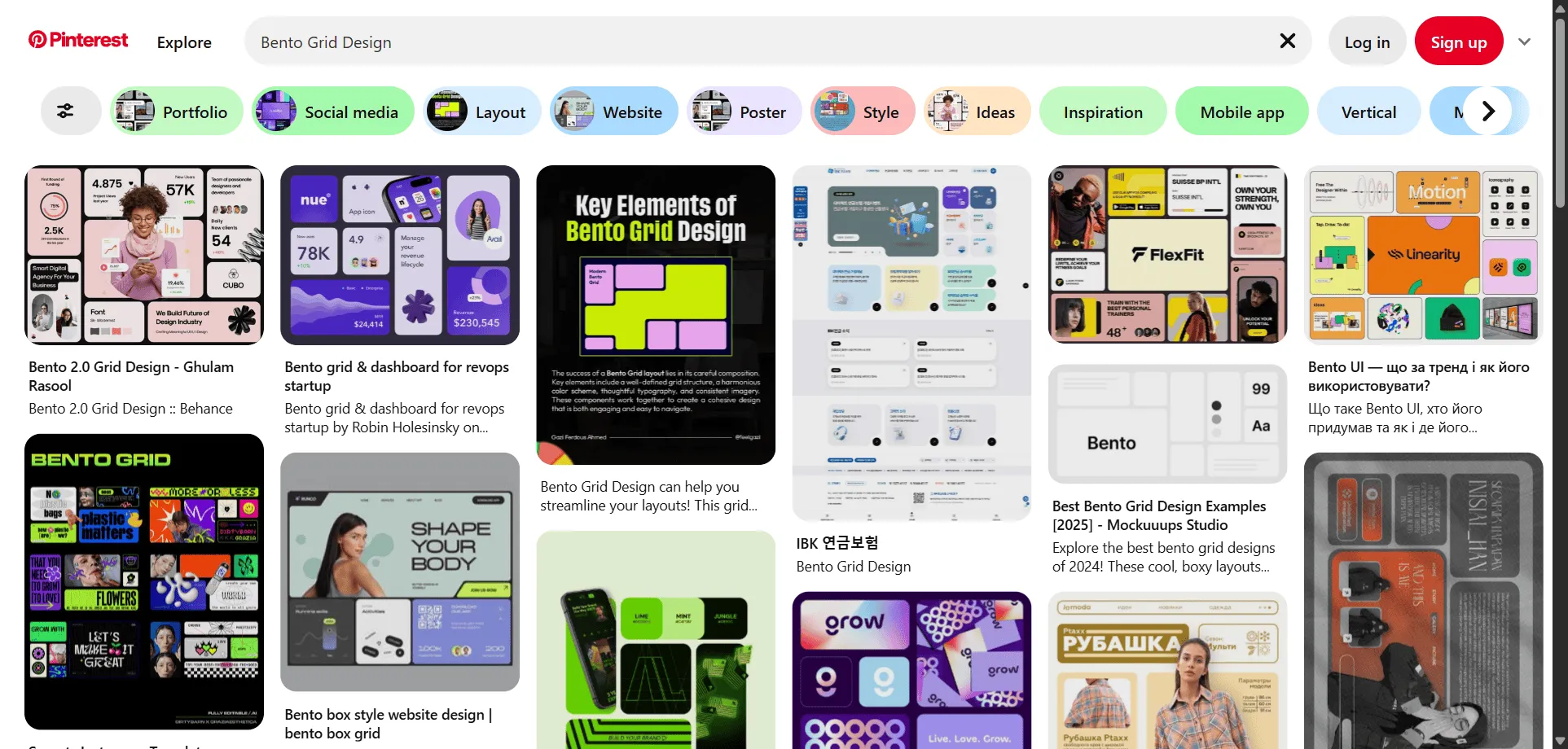
A neat and orderly layout style inspired by compartmentalized Japanese Bento boxes, where each section has its own dedicated space, making it tidy, modular, and functional. (Gaining significant popularity in UI design in 2024).
Cybercore
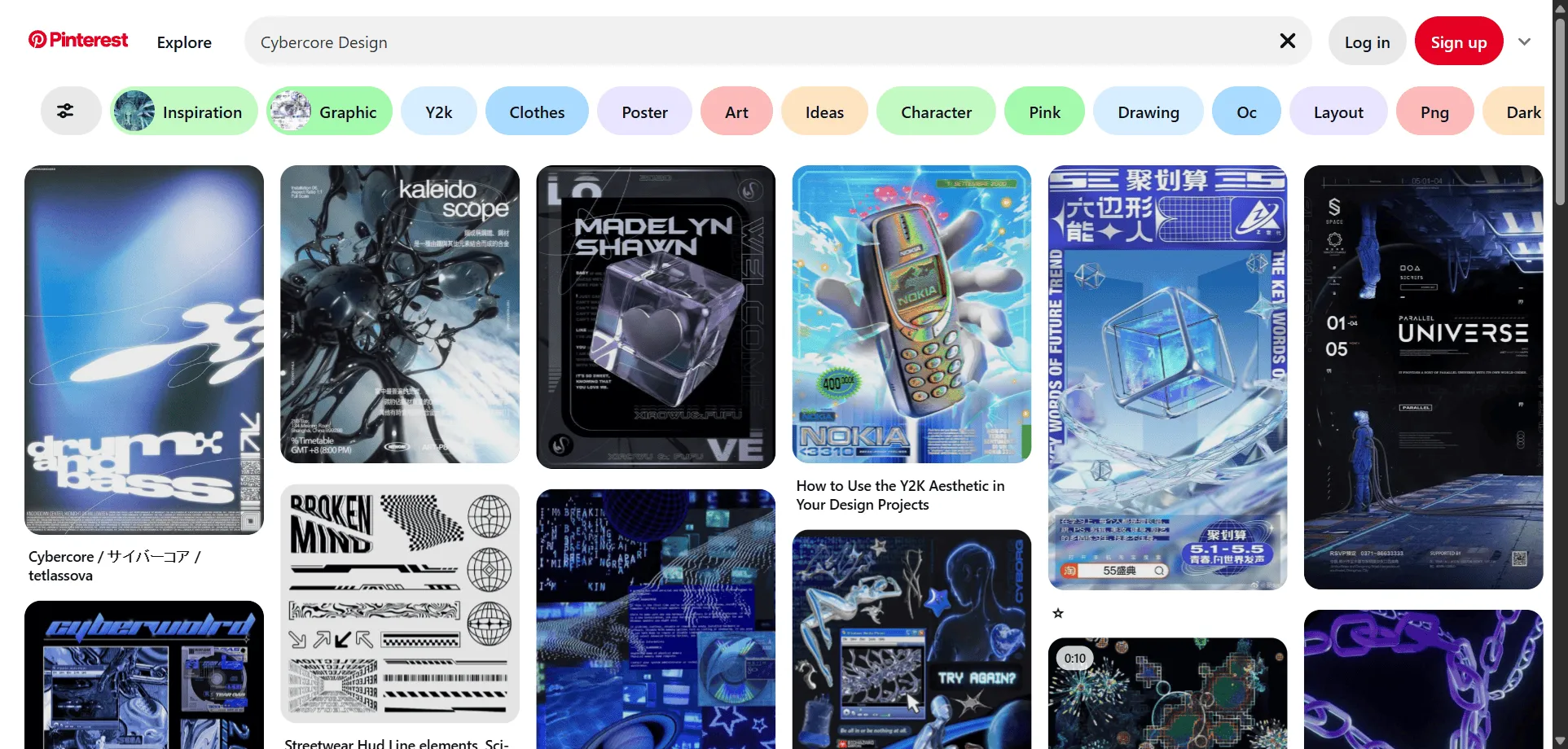
All about neon-lit visuals with circuit board motifs, metallic finishes, hard drop shadows, and pop-up windows, creating a sense of digital speed and a high-tech world. (Started bubbling up in the fashion scene in mid to late 2010s, with new popularity alongside early 2000s revival).
3x3 Grid Design
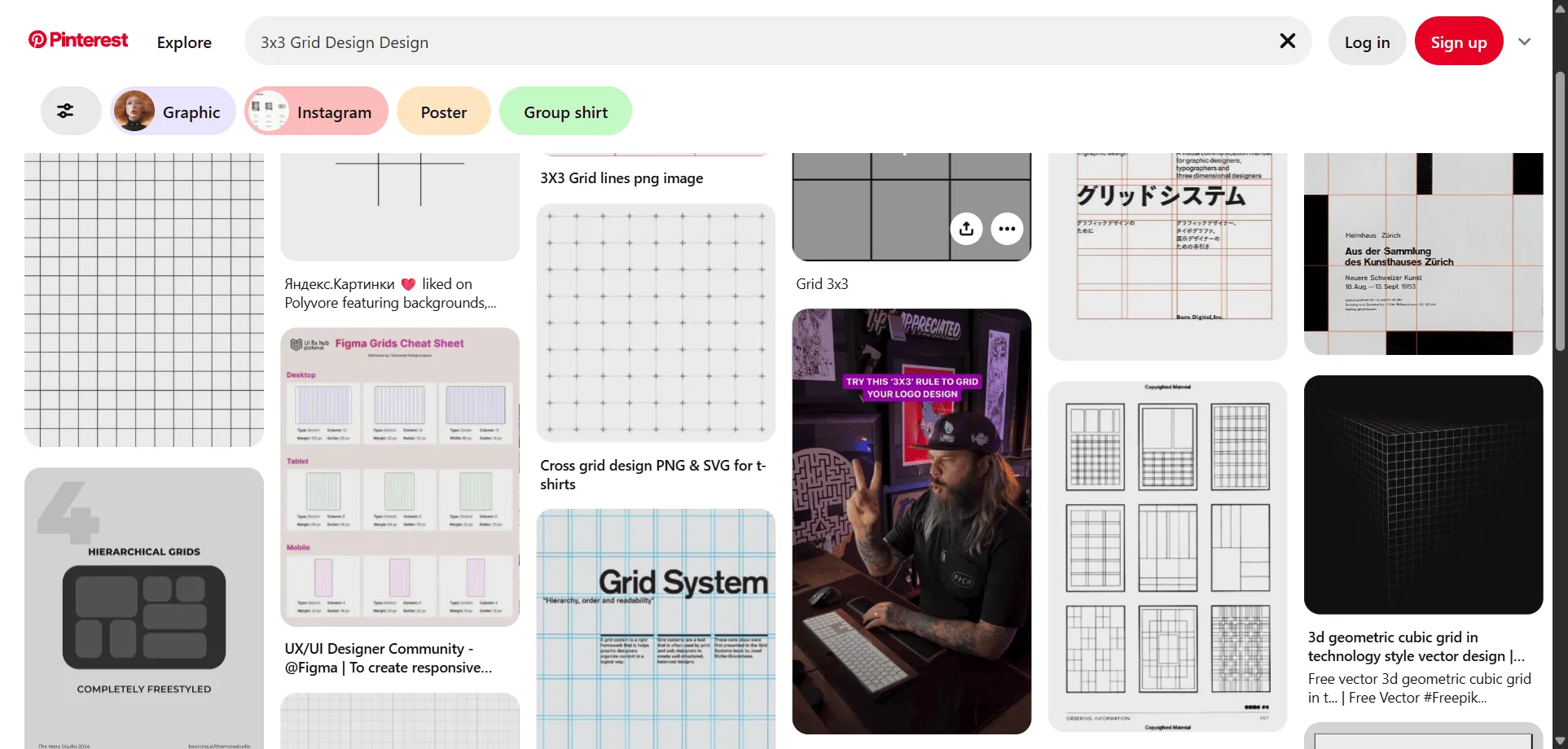
Organizes visuals into nine evenly spaced boxes, creating a straightforward, modular, and easy-to-understand layout, popular in social media and portfolios. (While grids have existed historically, its widespread adoption as a distinct and popular digital layout is relatively recent, especially with responsive web design).
Memphis Revival
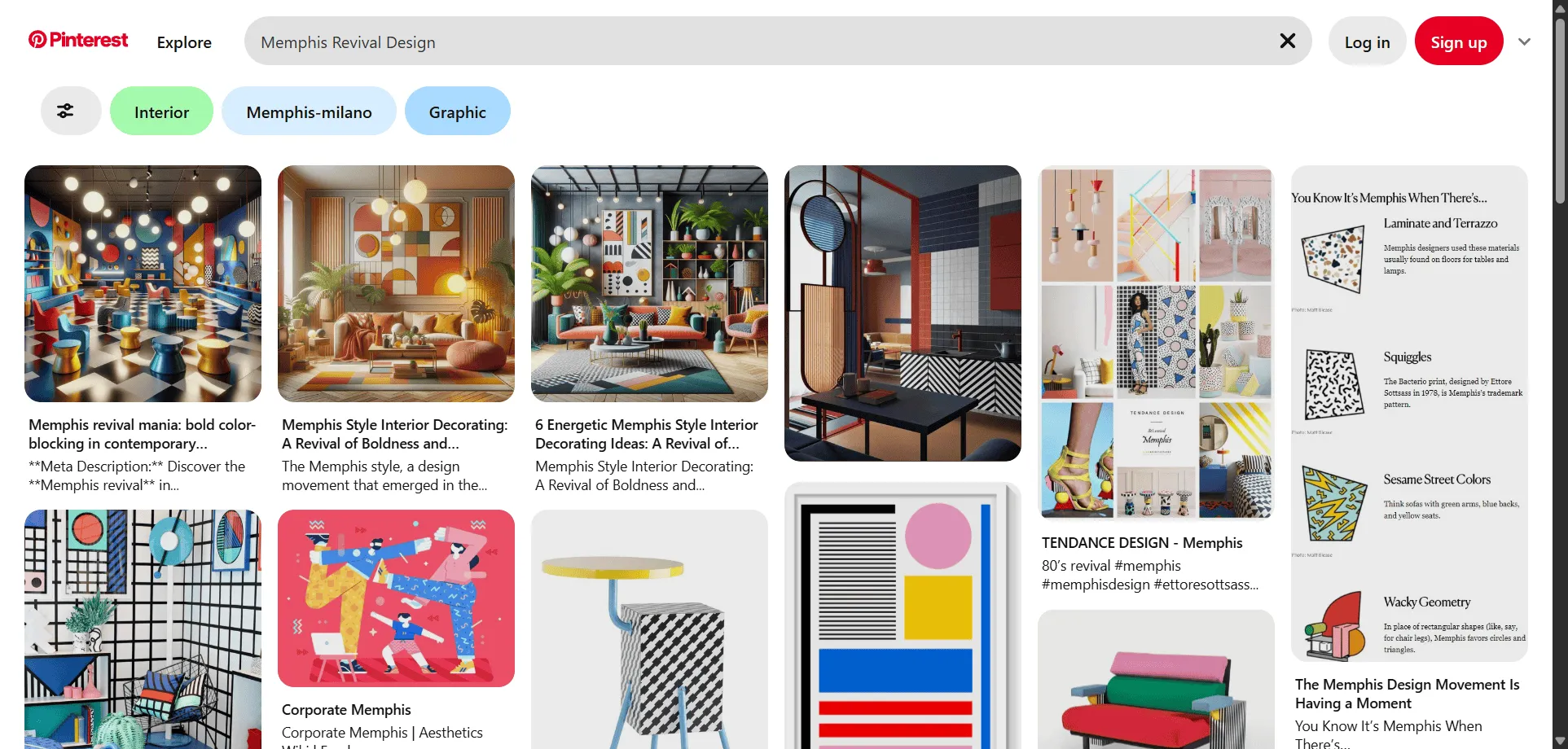
A specific resurgence of the Memphis style, characterized by its loud, geometric, bold, and playful postmodern vibes, incorporating experimental patterns and colors. (Revivals typically occur decades after the original movement, making this a more recent trend).
Brutalism
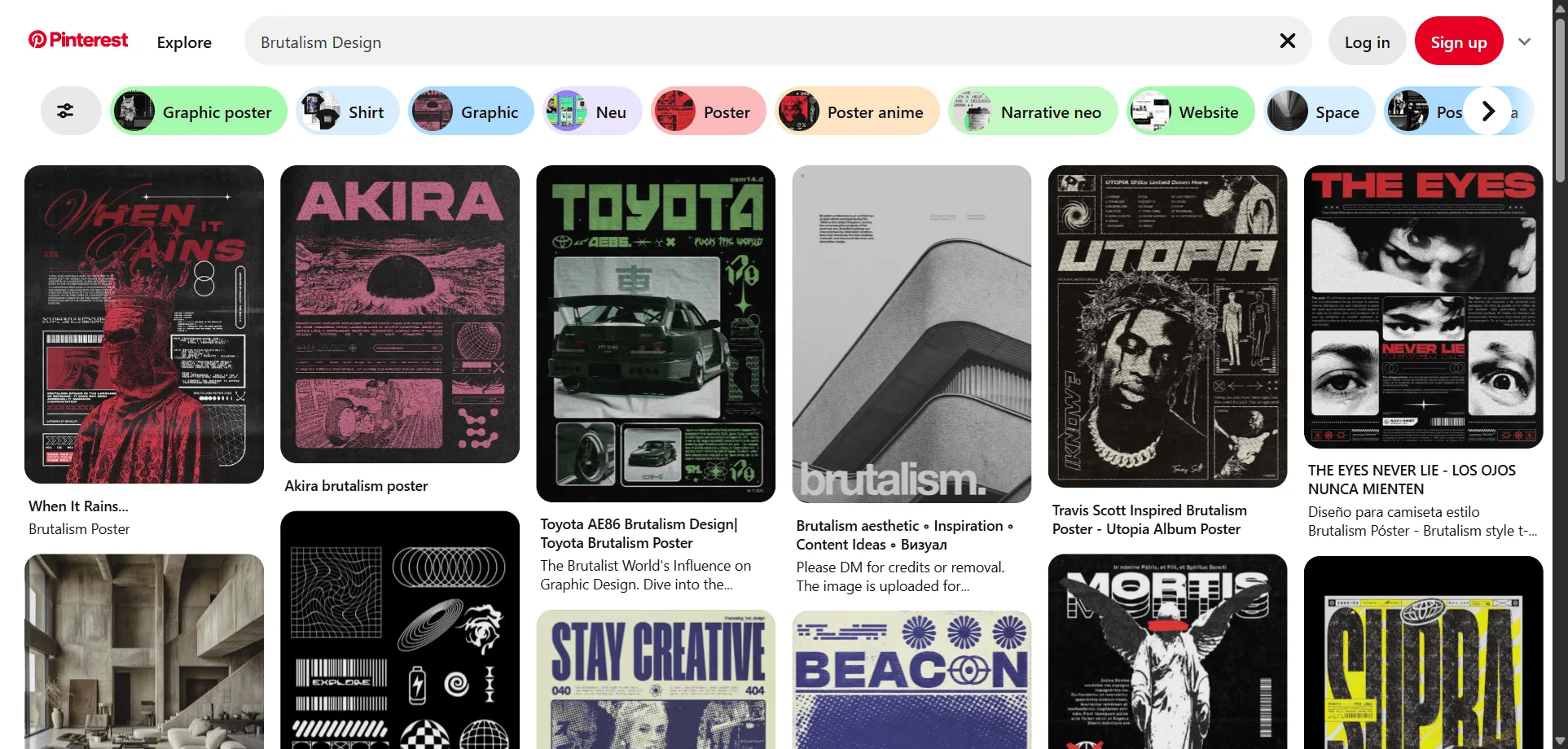
Favors stark layouts, bold monochrome palettes, and unrefined typography, intentionally raw and pushing against conventional grids and aesthetics, often challenging the status quo. (Originated in architecture in the 1950s-70s, found its way back to web design around 2016).
Vaporwave
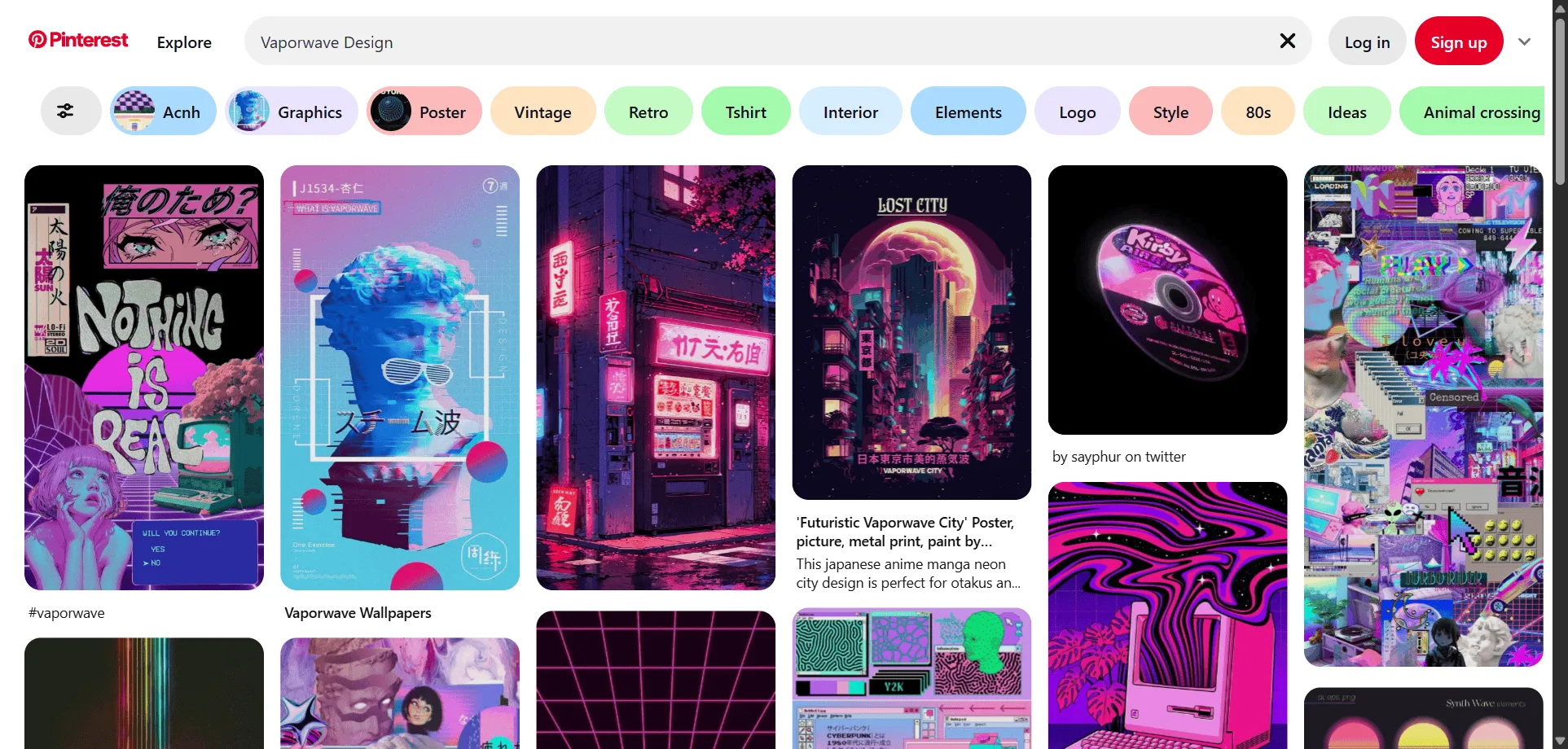
An internet-born aesthetic that mashes old-school computer graphics with Greek busts, neon hues, and glitchy effects, both nostalgic and satirical, playing with consumerism themes. (Emerged in the early 2010s online).
Synthwave
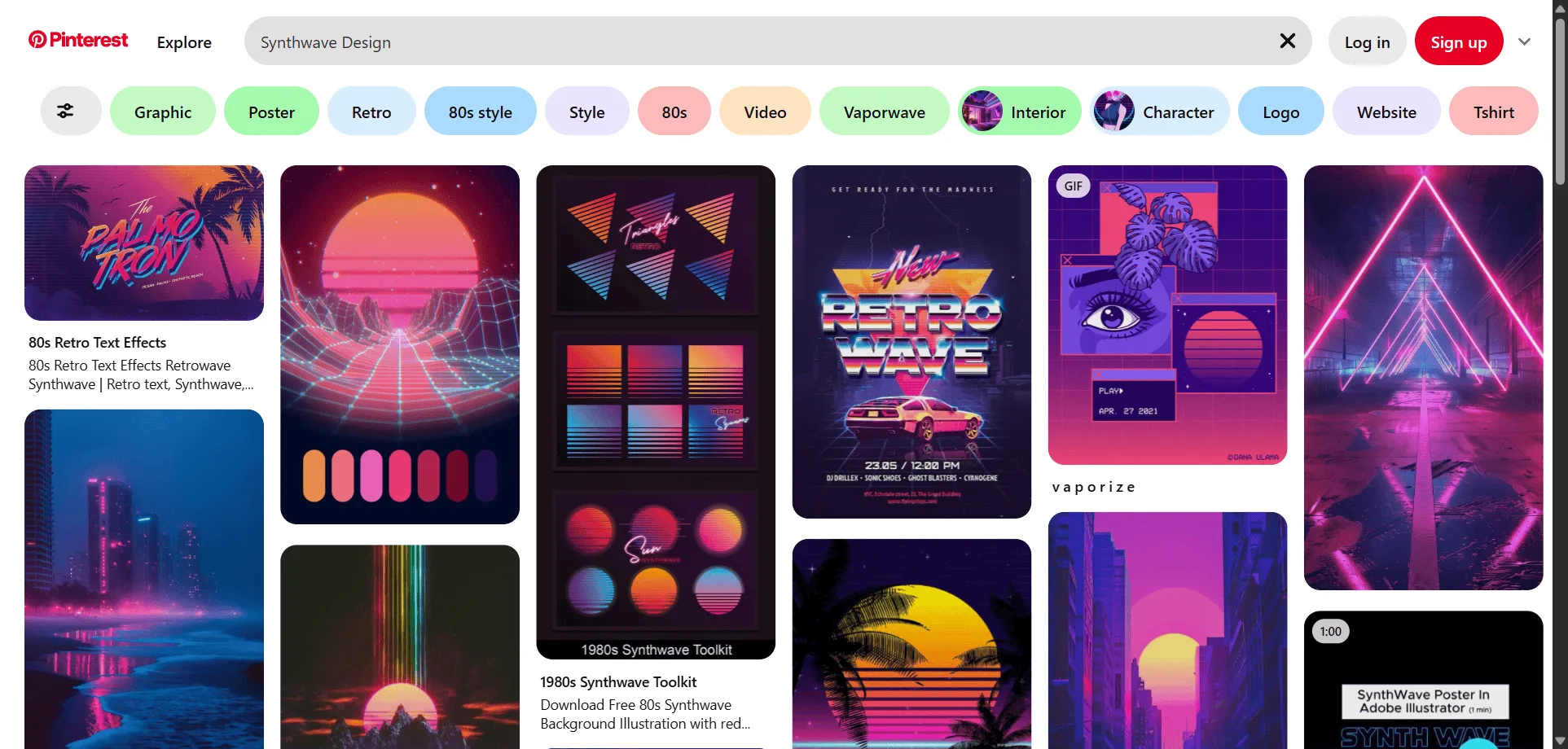
Taps into 80s nostalgia with neon grids, palm trees, and dramatic sunset gradients, heavily influenced by electronic music and old-school arcade aesthetics. (Emerged in the early 2010s).
Y2K
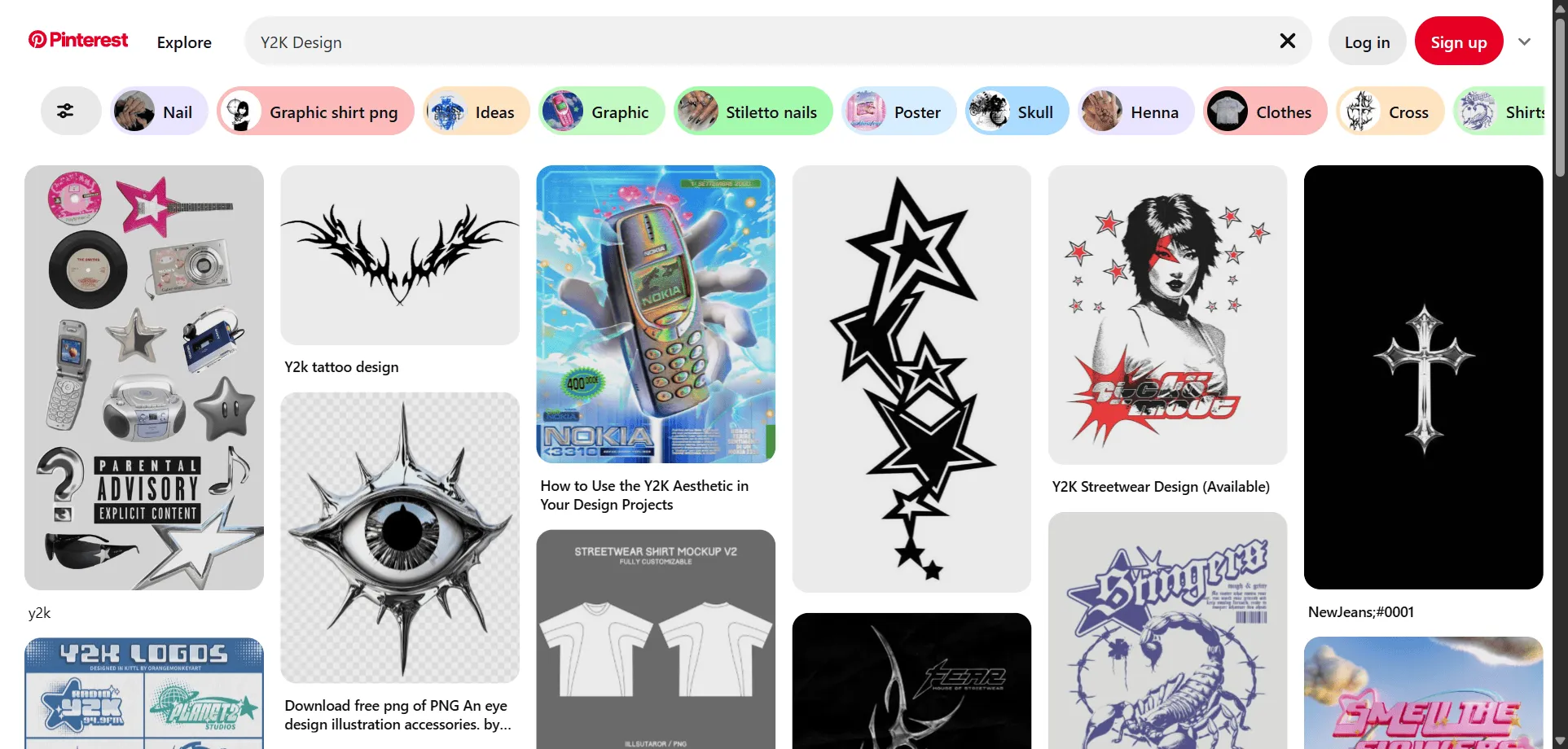
Features grungy textures, neon, bubbly, or futuristic typography, capturing the turn-of-the-millennia, tech-optimistic, futuristic look. (Popular around the late 1990s to early 2000s, experiencing a strong revival currently).
Flat Design

Characterized by two-dimensional elements, bright colors, simple icons, and a lack of shadows, gradients, or textures that create an illusion of depth. It’s often associated with digital interfaces for its clarity. (Gained significant popularity in the early 2000s, widely adopted in 2010s).
Minimalism
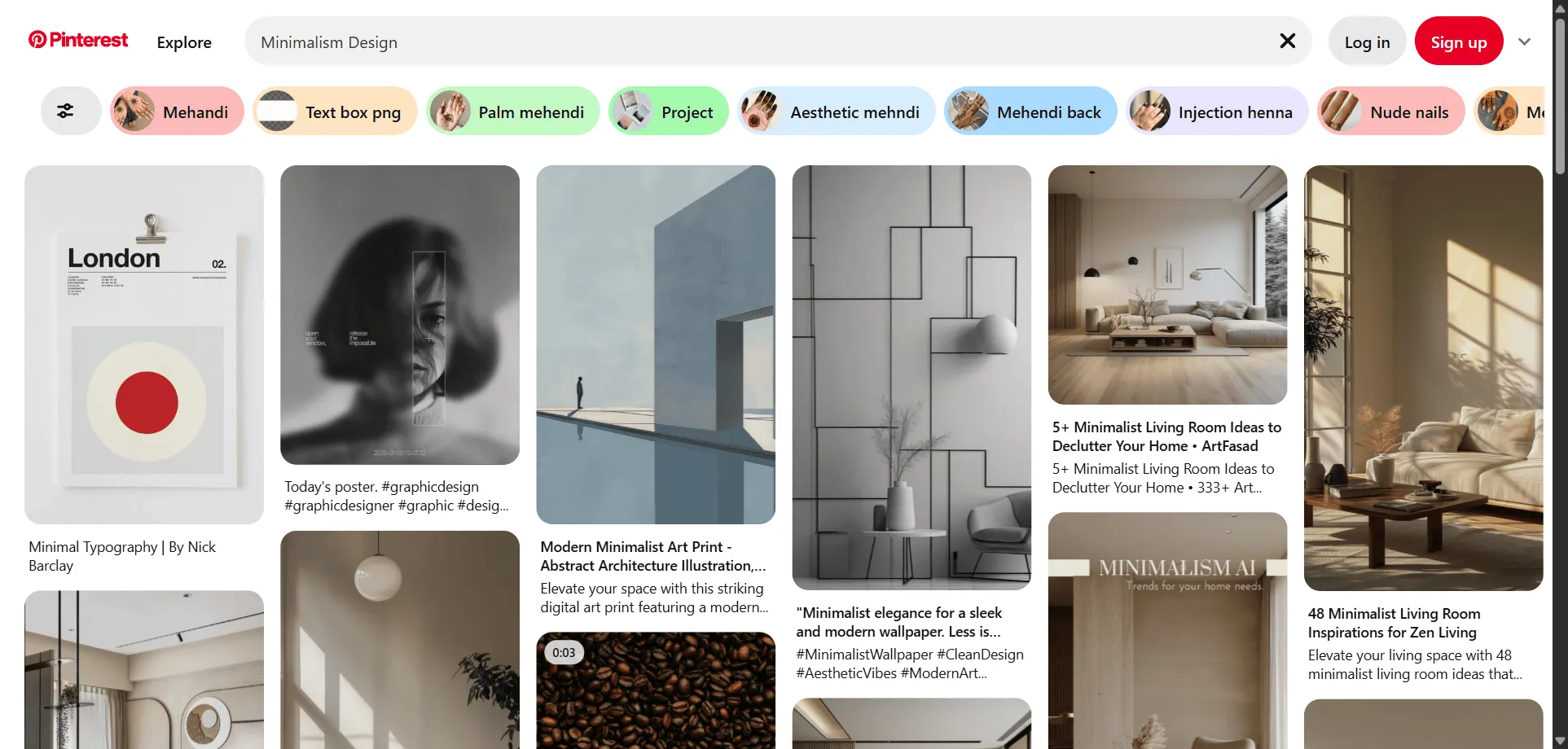
Emphasizes simplicity, clean lines, ample white space, and a restricted color palette. The focus is on essential elements and functionality, with “less is more” as the guiding principle. (Gained significant traction in the mid-20th century, particularly from the 1960s, and remains a dominant modern aesthetic).
Japandi

A blend of Japanese minimalism and Scandinavian warmth, characterized by neutral colors, natural materials, and a clean, serene aesthetic with a touch of Bauhaus. (A relatively recent hybrid style, gaining popularity in the late 2010s/early 2020s).
Organic Design
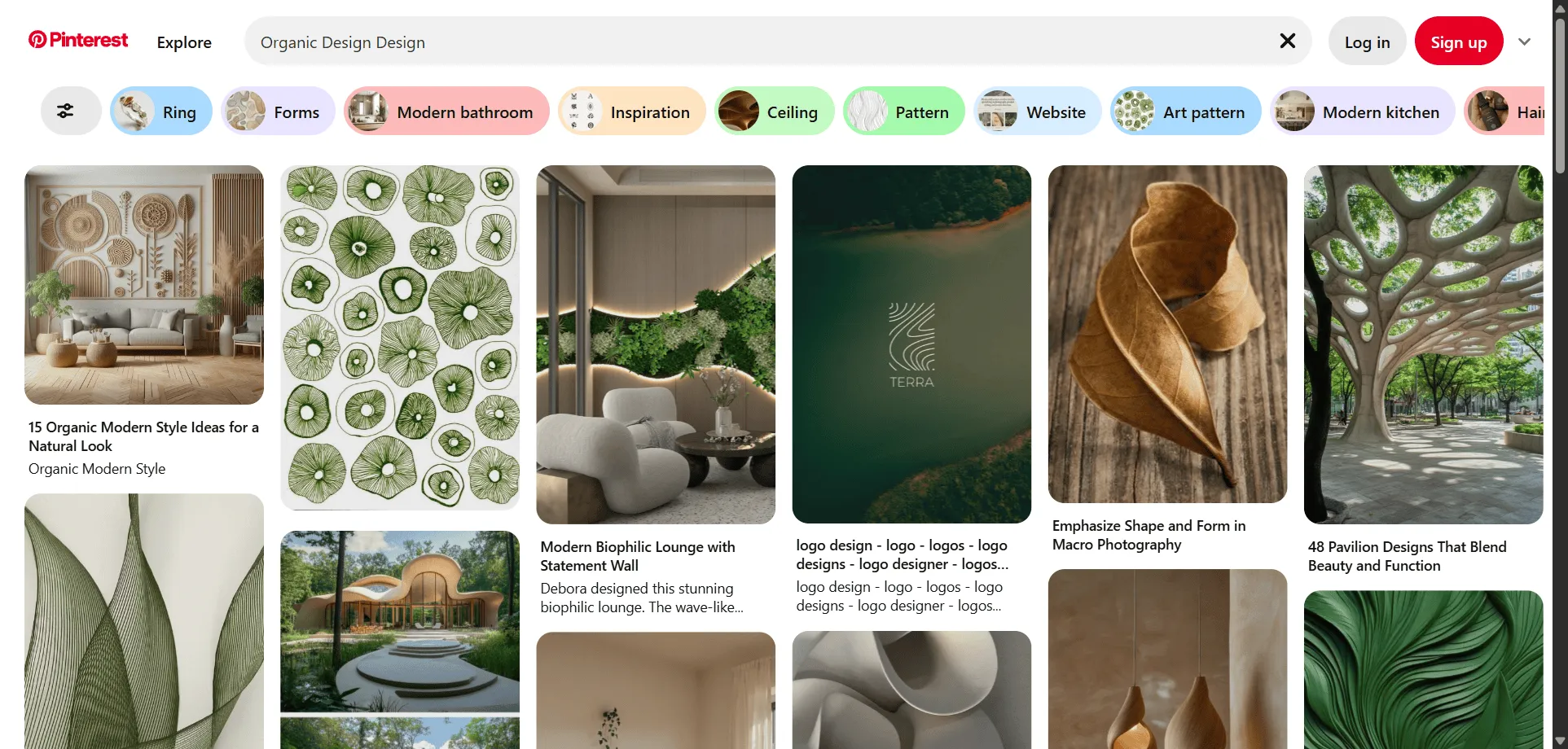
Emphasizes natural forms, fluid lines, earthy textures, and a color palette inspired by nature. It aims for a harmonious and natural feel, often with an eco-friendly connotation. (Has seen renewed interest in recent decades, particularly with environmental awareness).
Three-Dimensional (3D) Design
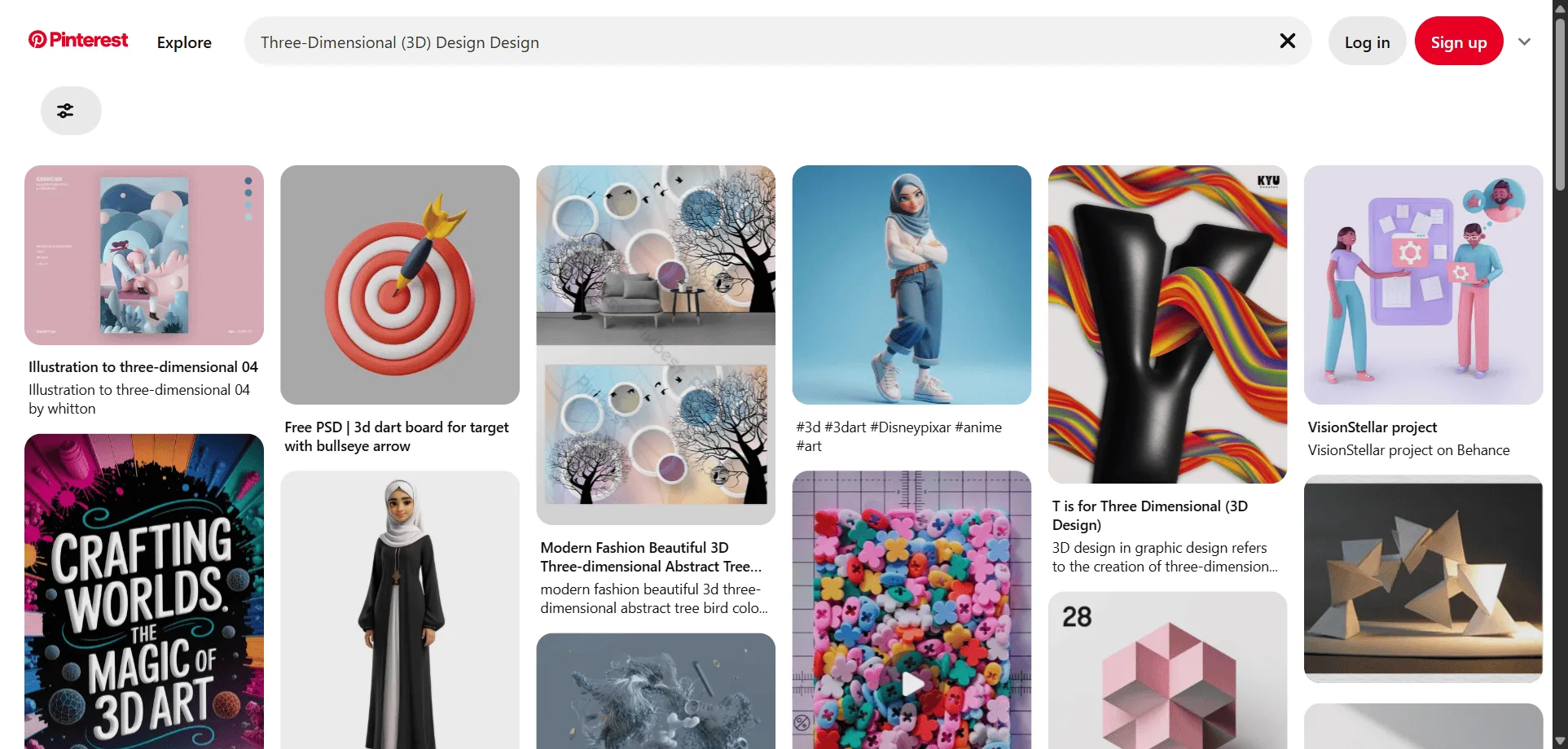
Creates the illusion of depth and volume using shading, perspective, and various rendering techniques. It can make objects appear to pop off the page or screen. (Tools became more accessible in the 1990s and has evolved significantly since). Check out these 3D icons and 3D projects.
Photorealism (in Graphic Design)

Aims to reproduce images with photographic accuracy, often using hand-drawn or digitally rendered techniques to create highly detailed and realistic visuals. (While photorealistic art has existed, its application in graphic design became more widespread with advanced digital tools). Find high-quality stock images for this style.
Illustrated Design

Heavily relies on custom illustrations as the primary visual element. This can range from whimsical and childlike to sophisticated and detailed, offering a unique brand voice. (Always present, but specific trends in illustration rise and fall; custom illustration for branding has had a strong resurgence in the last decade). Explore our illustration resources.
Playful Design
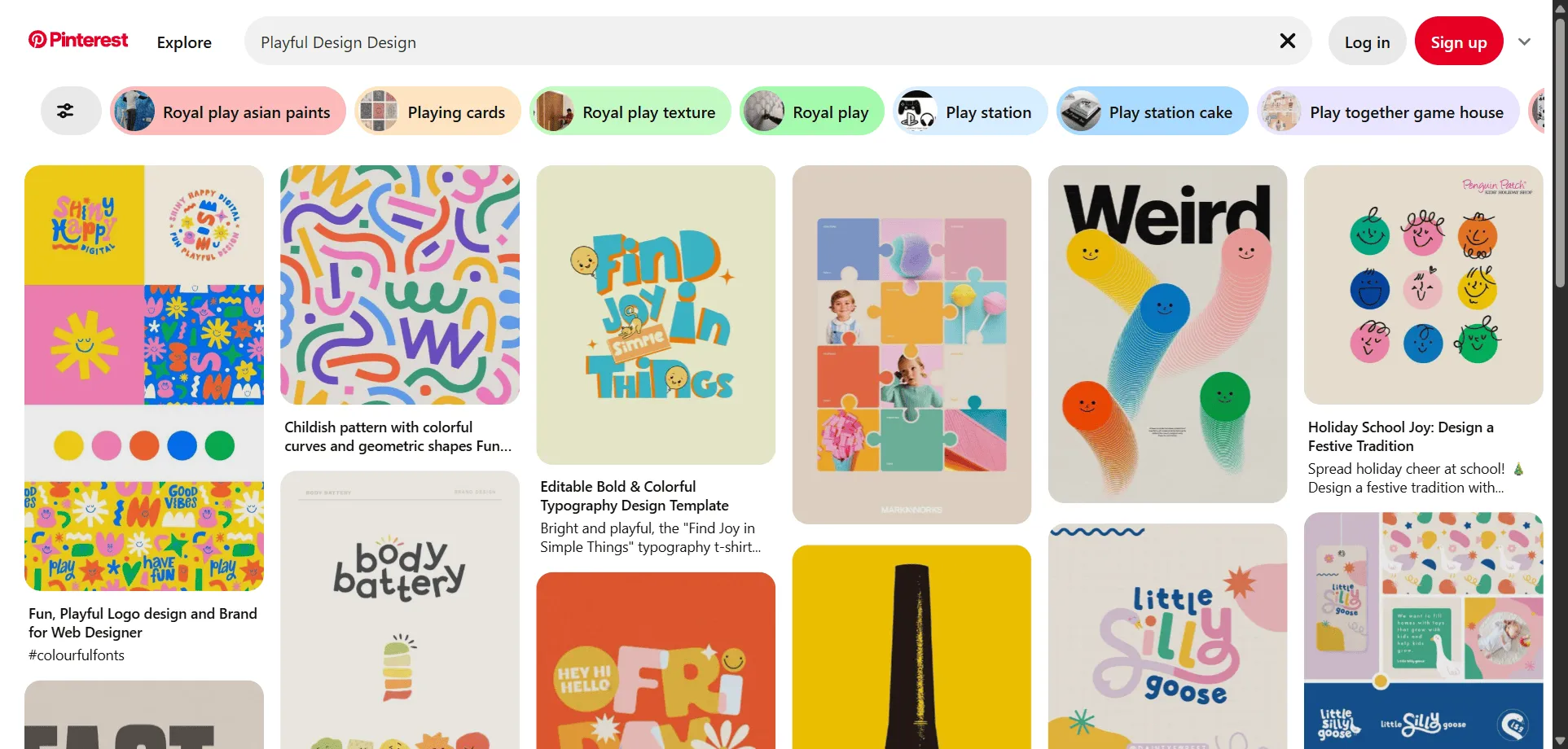
Characterized by bright colors, whimsical characters, rounded shapes, and a sense of fun and lightheartedness. Often seen in designs for children’s products or brands targeting a youthful audience. (While timeless, its specific aesthetic and application have evolved with digital platforms).
Masculine Design
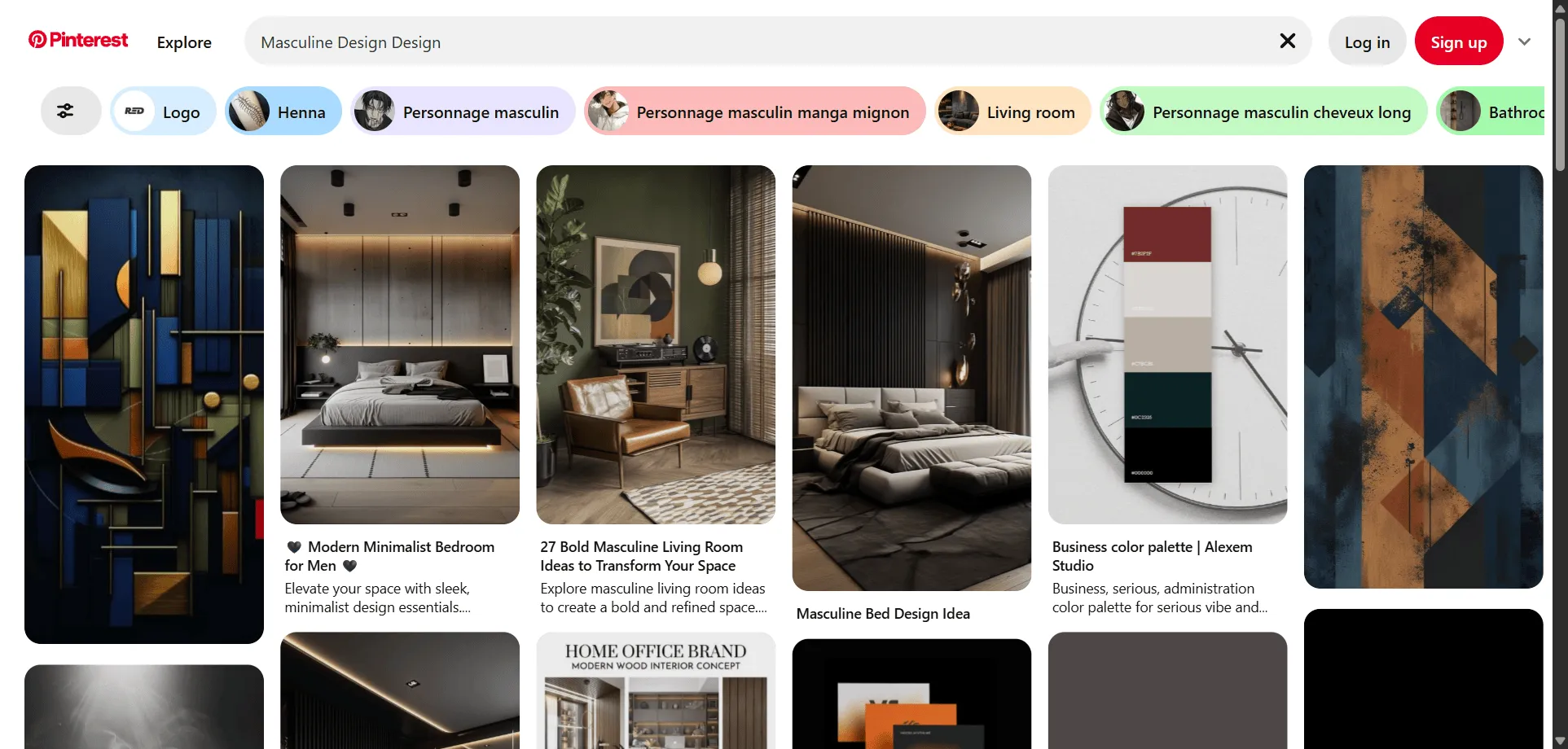
Typically employs darker color palettes, strong lines, bold typography (often sans-serif with thick strokes), and textures like metal or wood, conveying power, ruggedness, or sophistication. (Evolves with general trends in aesthetics, but specific modern applications have become more defined).
Feminine Design
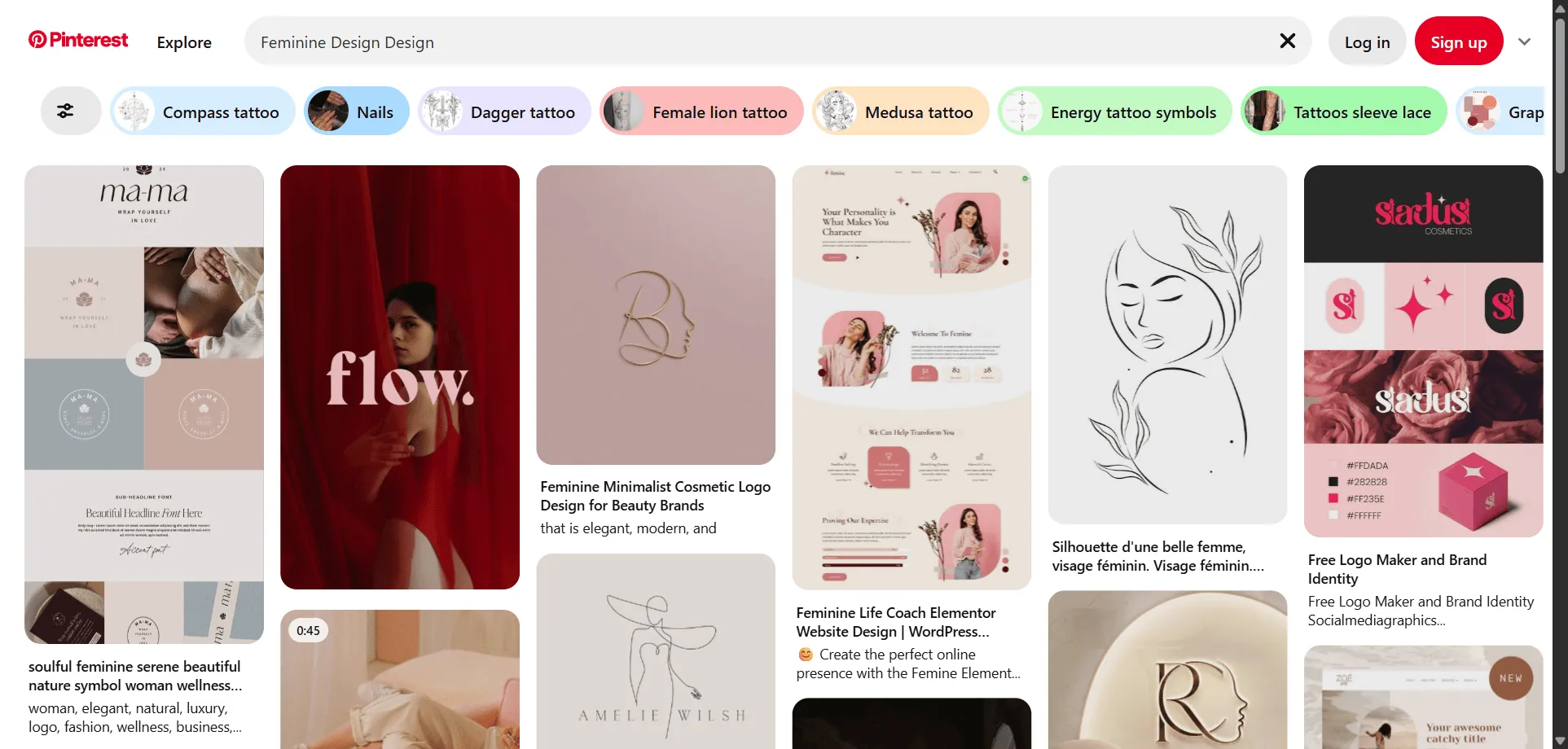
Often uses soft hues, delicate fonts (sometimes script or elegant serifs), floral motifs, and graceful lines to evoke a sense of elegance, beauty, or tenderness. (Similarly, its interpretation and application have evolved with contemporary tastes).
Corporate Design
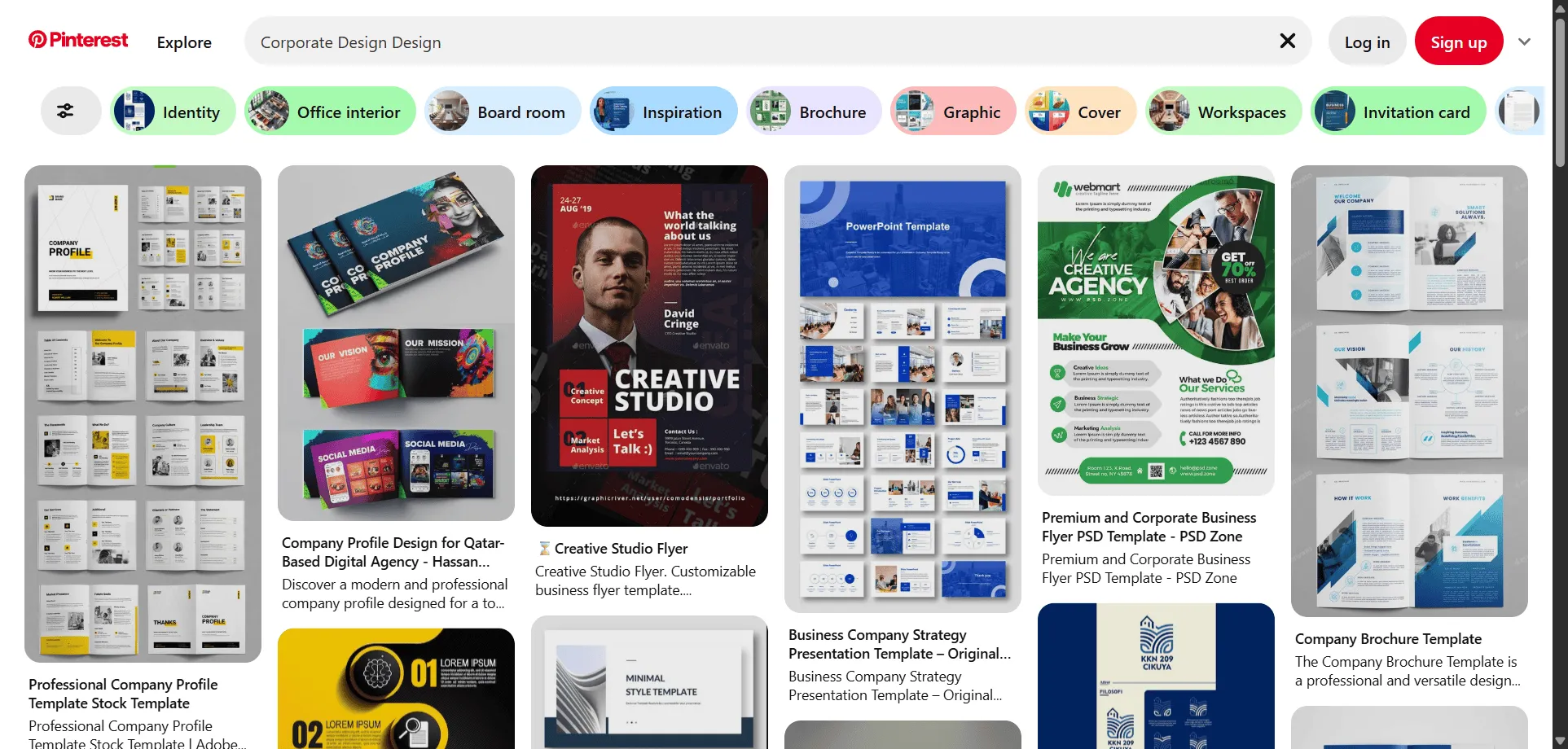
A professional and formal aesthetic characterized by clean layouts, sans-serif fonts, simple iconography, and often a muted or consistent color palette to convey trust and reliability. (Modern corporate design emphasizes clarity and directness, evolving from earlier, more rigid forms).
Ethereal
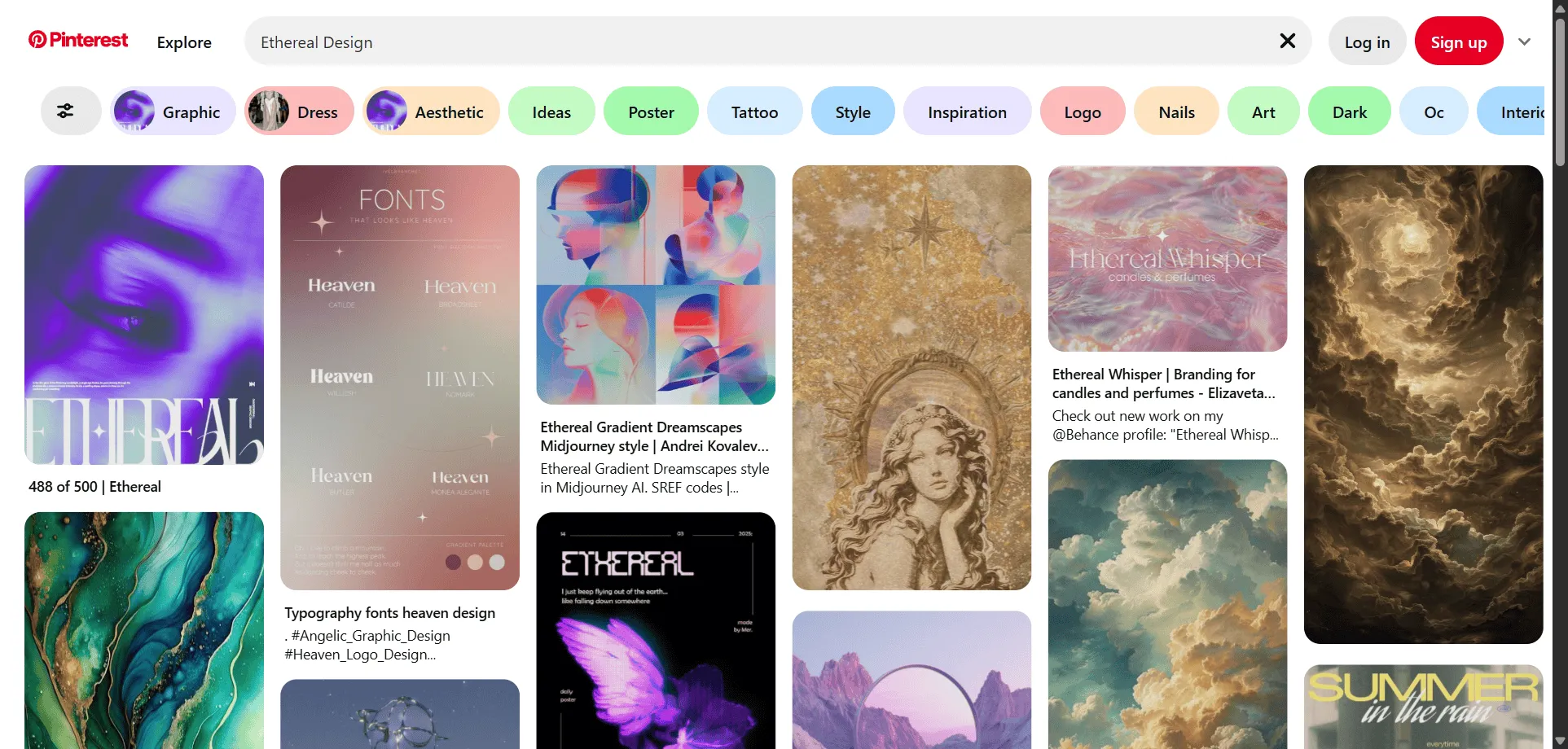
Focuses on soft hues, delicate layering, and an airy, otherworldly atmosphere, creating a dreamlike, gentle, and refined feel. (Became super trendy in the 2010s, especially in photography and web design).
Mystical Western
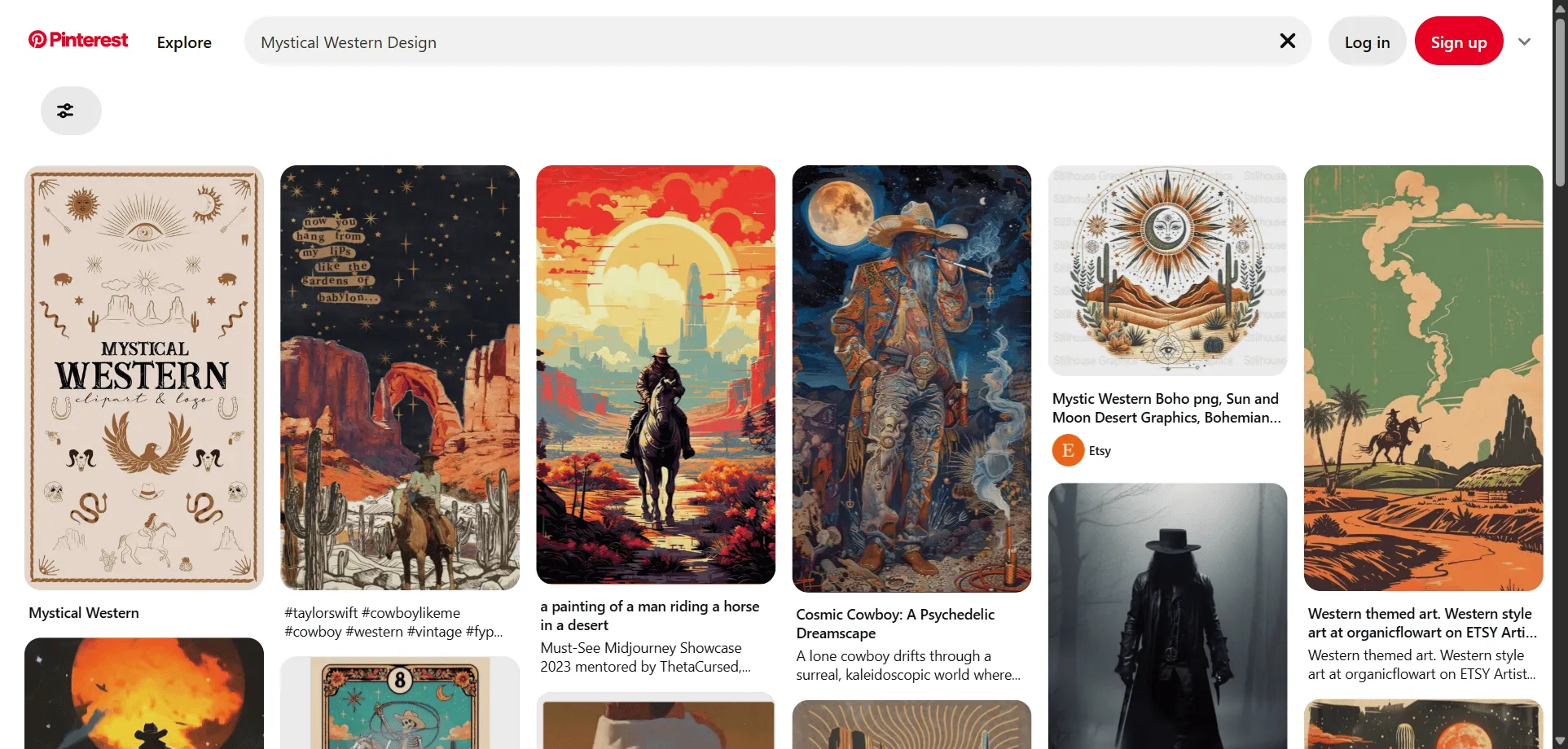
Marries classic cowboy vibes with cosmic, spiritual elements, featuring desert landscapes, moonlight hints, and celestial symbols, creating a dreamier aesthetic. (The “mystical twist” took off in modern boho circles, particularly in the 2010s).
Farmhouse

Focuses on rustic simplicity, natural fabrics, and charming countryside aesthetics, often paired with cottagecore, creating a warm, nostalgic feel. (Took social media in the 2010s and continues to be popular).
Kitsch

Turns tackiness into an art form with bright colors, exaggerated imagery, and cheeky pop culture references, often playful, ironic, and nostalgic with a retro graphic feel. (While the idea dates back to the 19th century, it enjoyed a significant revival in mid-20th century pop art and continues to pop up as an ironic trend).
Conceptual Sketch

Features spontaneous, childlike, or naive drawings with a free-form and unpolished energy, often used in doodle art for creative and youthful branding. (Doodle art gained traction after the 2000s).
Utilitarian Design
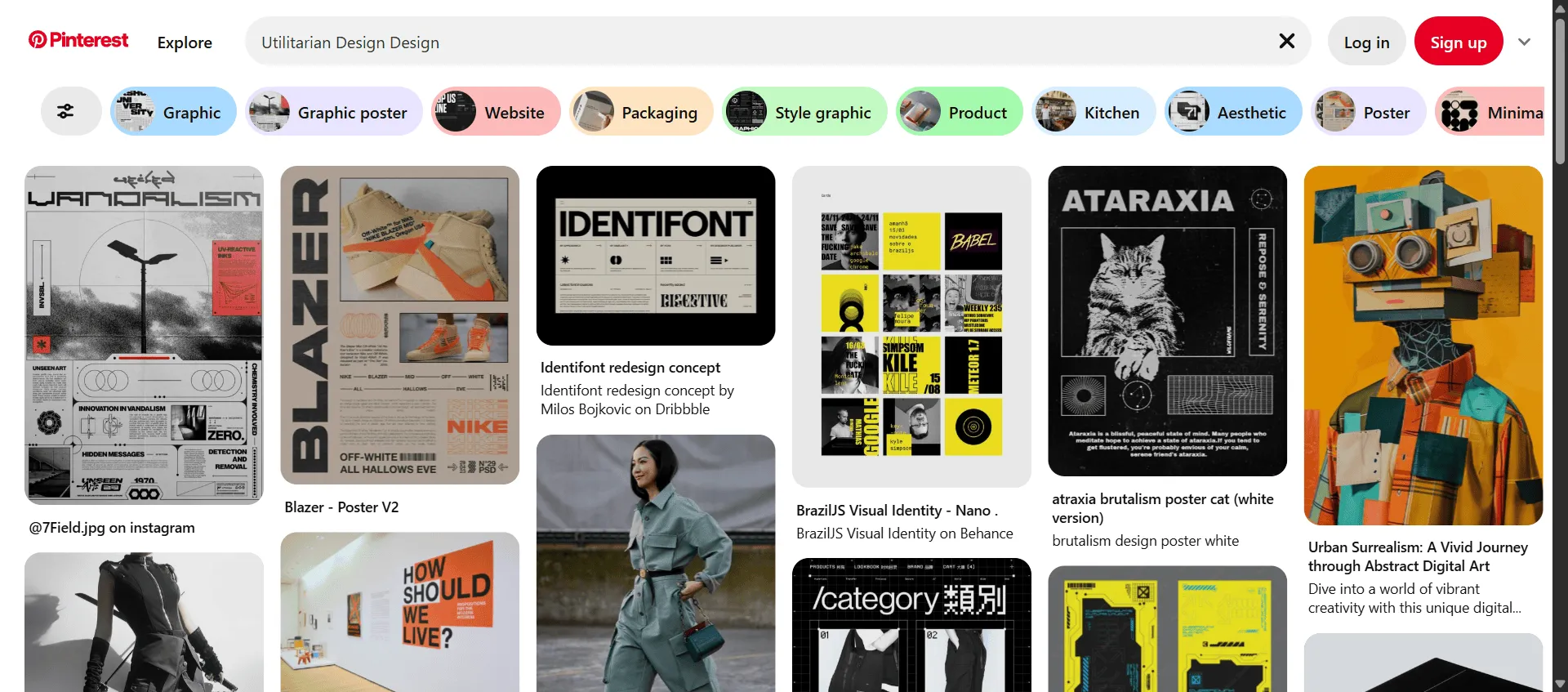
Strips down design to bare essentials, focusing on practicality and function over decoration, often stark, minimal, and making information instantly clear with a lot of typography in a grid. (The mindset emerged alongside modernist principles in the mid-20th century and resurfaces in minimalist movements today).
Anthropomorphic Design
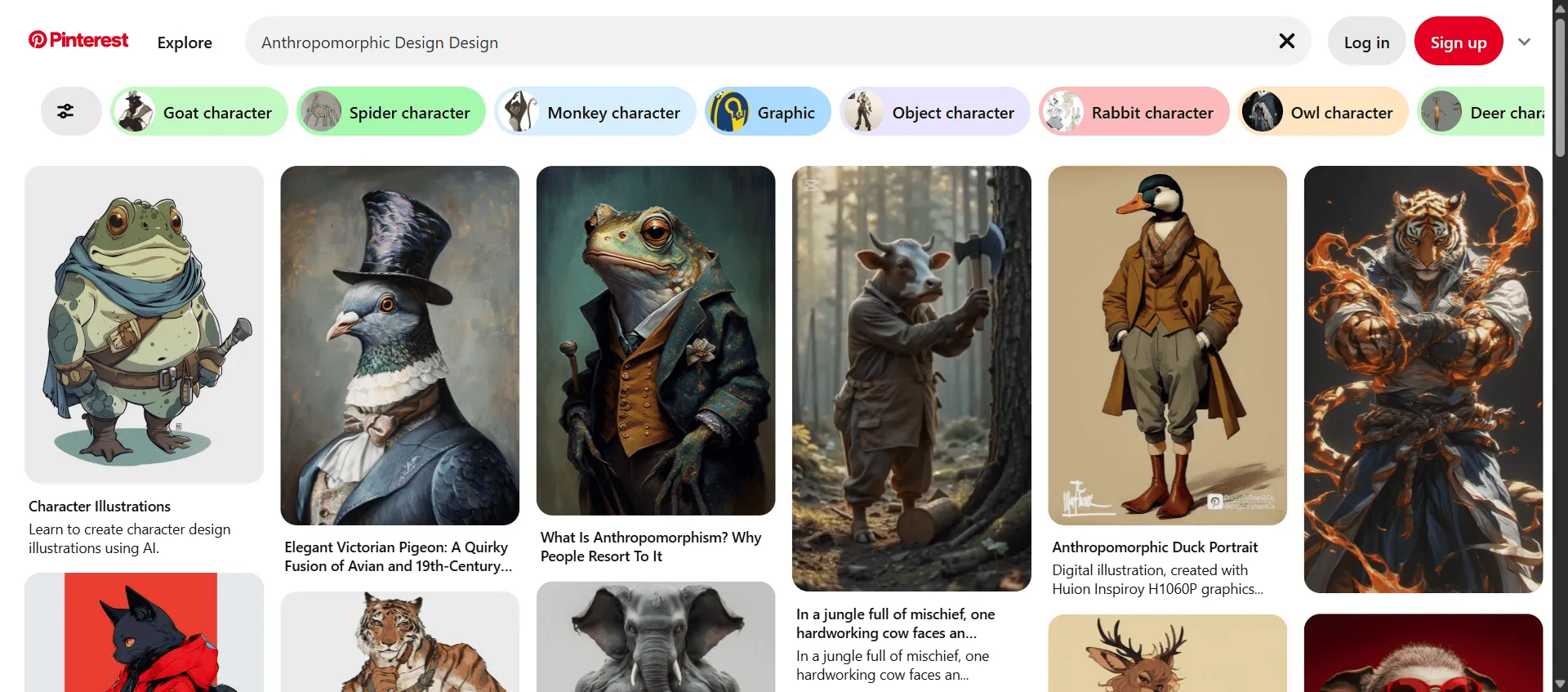
Where non-human objects, particularly animals, take on human traits and characteristics, creating whimsical and relatable characters. (While dating back to ancient mythology, the commercial boom happened in the 20th century with cartoons and mascots).
Pixel Art
![]()
Blocky, low-resolution graphics from early computer or video games, often referred to as 8-bit or bitmap art, characterized by tiny squares of color and limited palettes, evoking a retro and nostalgic feel. (Peaked between the 70s and 80s, then saw a comeback in indie games in the 2010s and continues to be relevant). Explore pixel art icons.
Mid-Century Styling
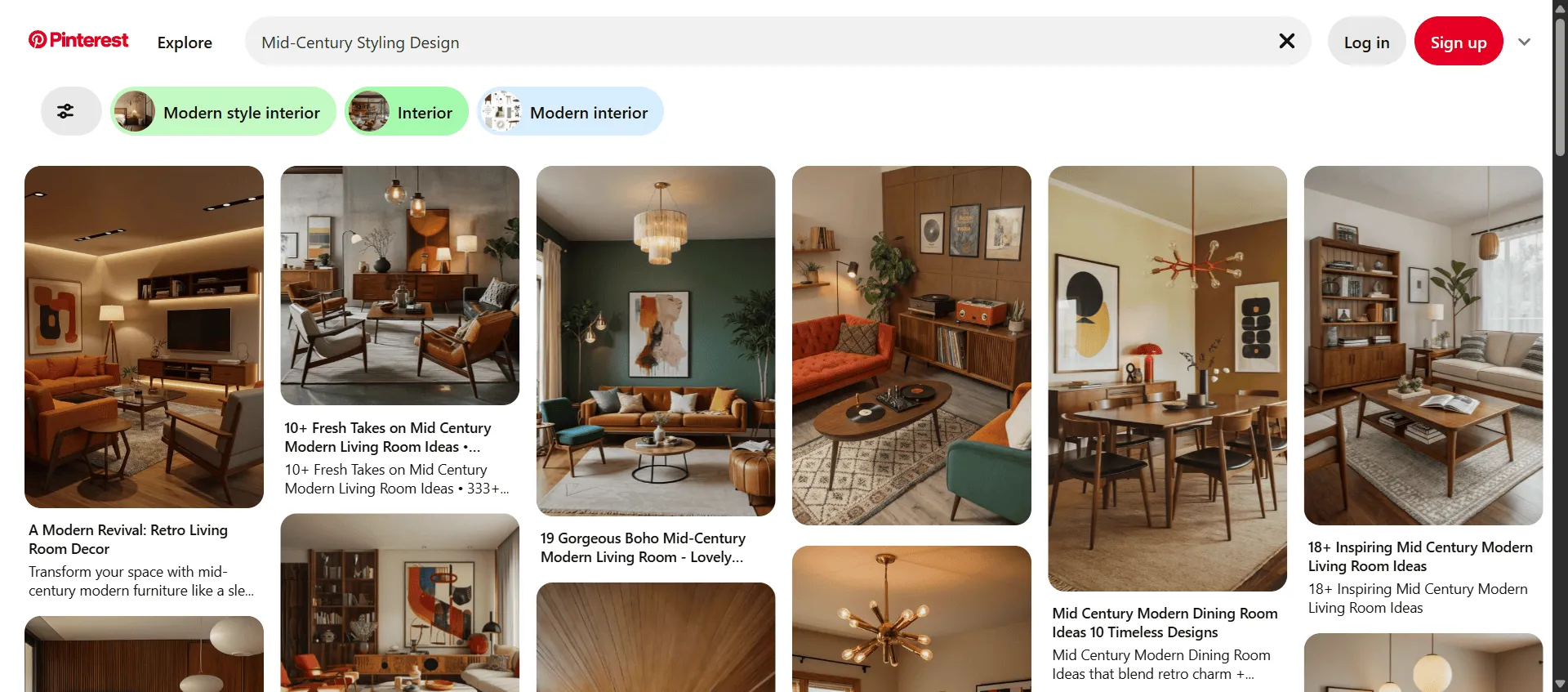
Hails from the 1950s, featuring clean lines, modern optimism, vibrant yet slightly muted color palettes, sleek silhouettes, organic curves, and a nod to Space Age innovation. (Roughly spanning 1945 to 1970).
Swiss Style (International Typographic Style)
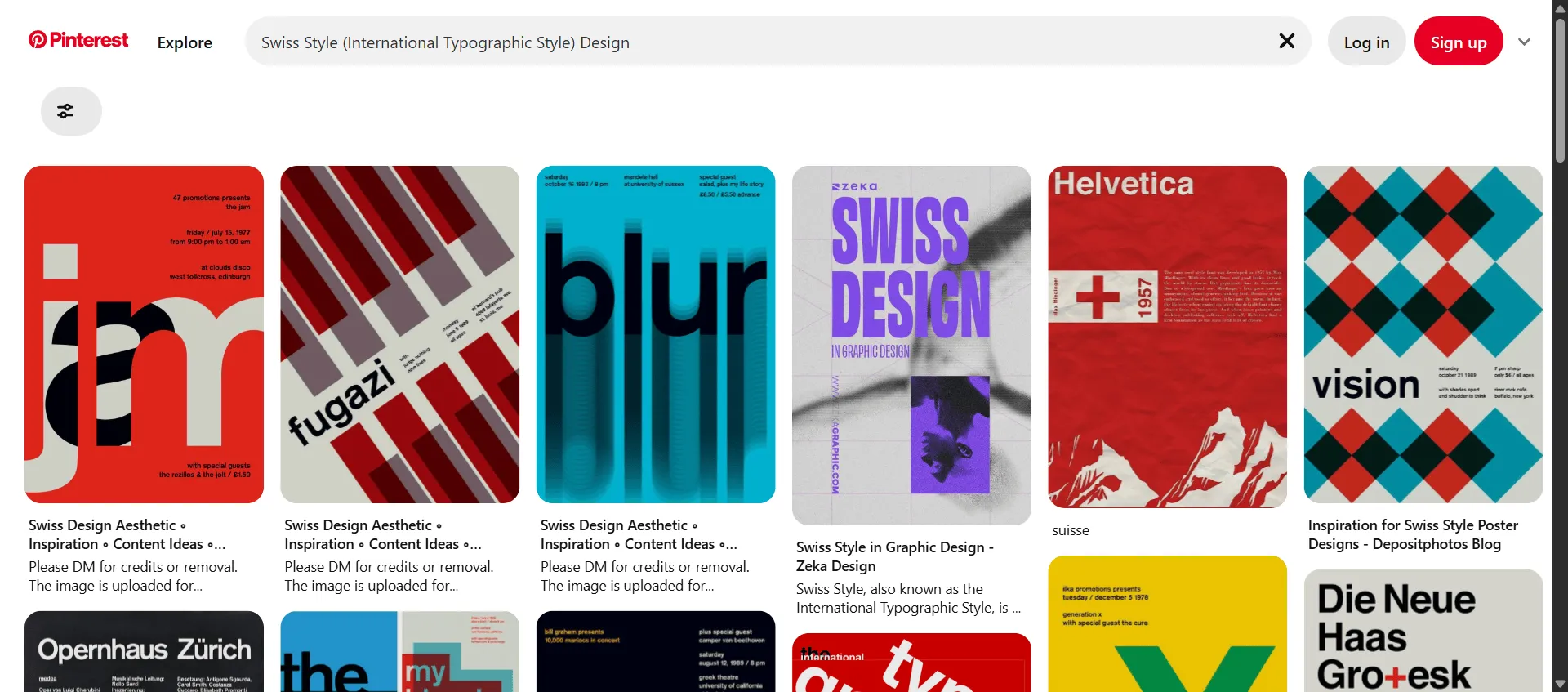
Known for its strict grid systems, sans-serif typography (like Helvetica), clear hierarchy, and objective photography. It prioritizes clarity, legibility, and objectivity. (Emerged in the 1950s in Switzerland).
Pop Art
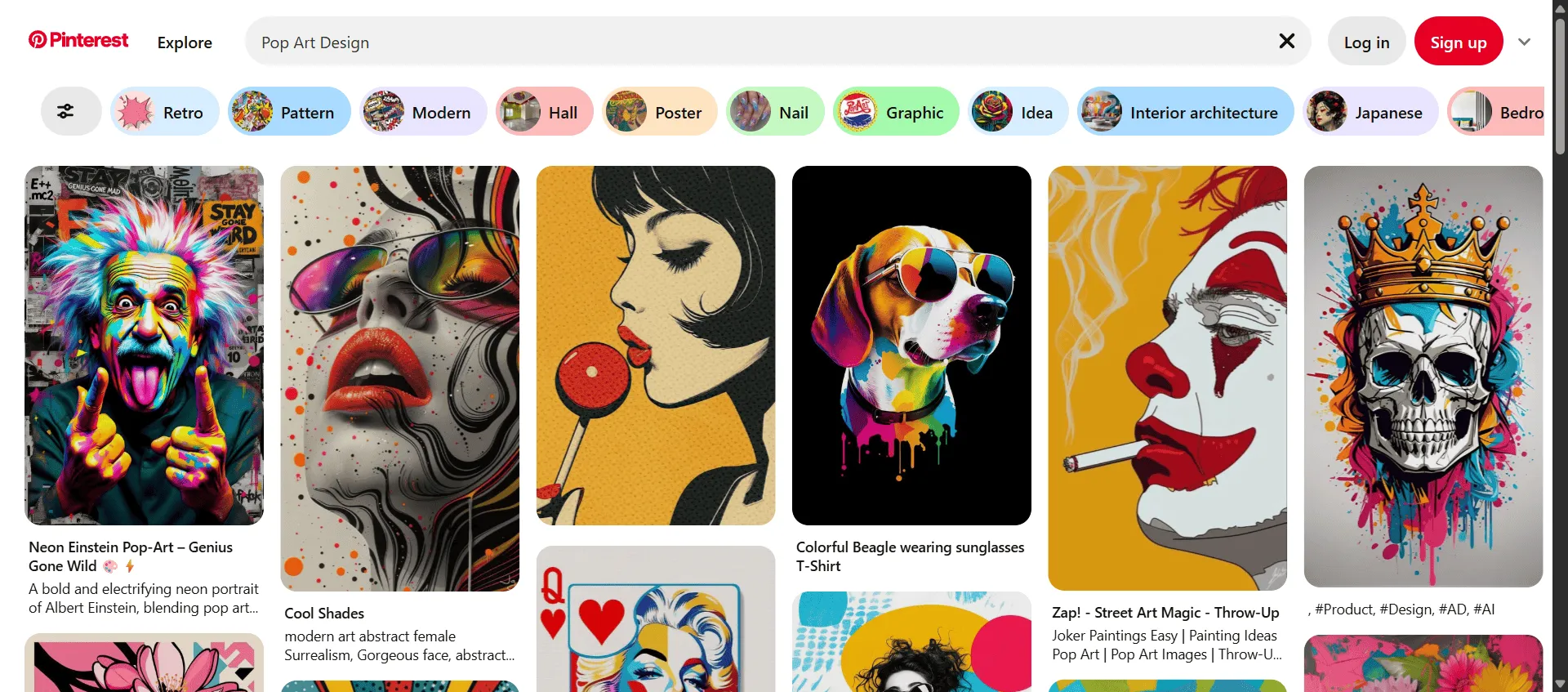
Takes everyday objects, comic strip images, and famous icons, combining them with bold color and repetition to make a big statement, often playful, eye-catching, and a commentary on consumerism. (Beginning in the 1950s and 1960s).
Shabby Chic
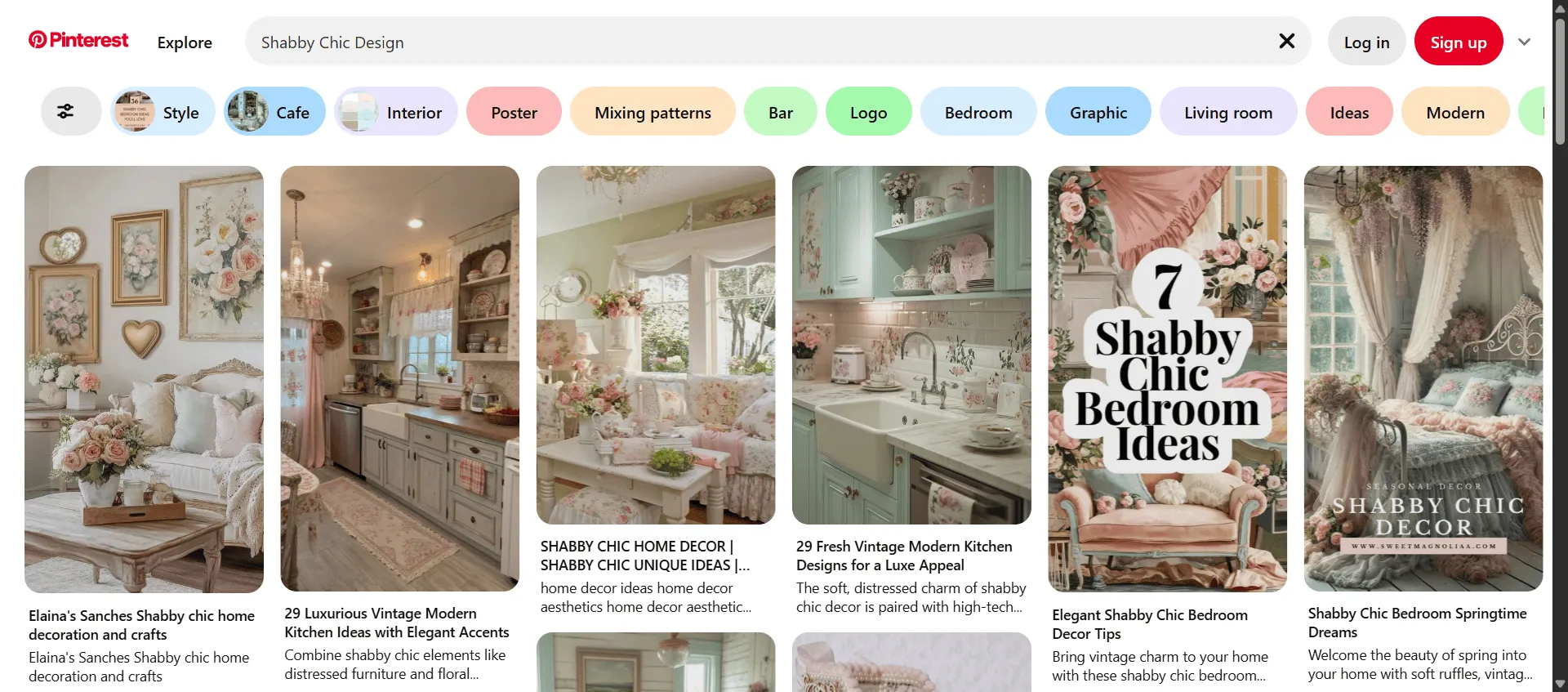
Features distressed finishes, pastel tones, and vintage romance, often with faded florals and repurposed aesthetics, evoking a cozy, sentimental feel. (Rose to popularity as an interior design trend in the 1980s and 90s).
Memphis Style
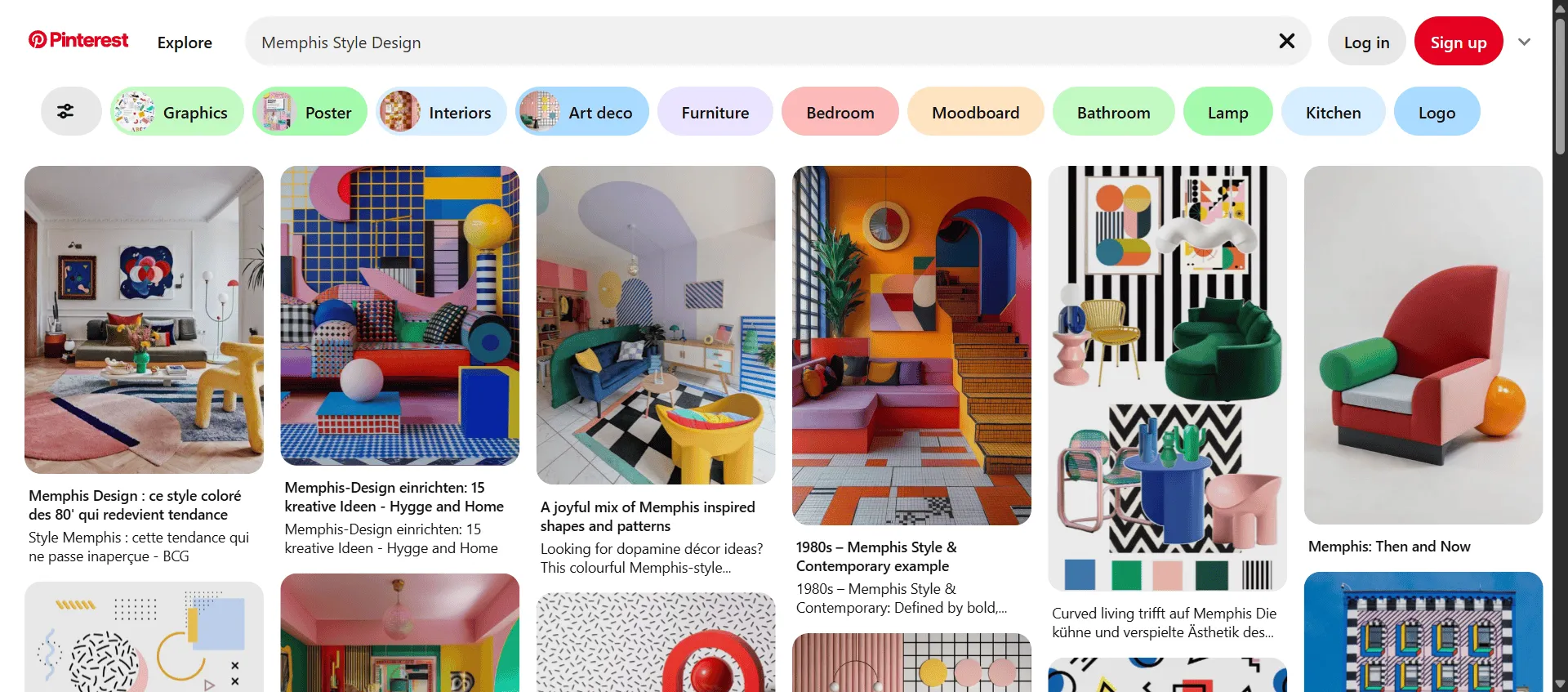
Loud, geometric, bold, and playful, embodying postmodern vibes with experimental, often clashing, patterns and colors. (Came into the spotlight in the 1980s thanks to the Memphis Group).
Steampunk

Fuses Victorian-era aesthetics with mechanical, steam-powered technology in a retro-futuristic way, picturing gears, cogs, brass gadgets, and alternate worlds powered by steam engines. (Originated as a literary subgenre in the 1980s).
Bauhaus
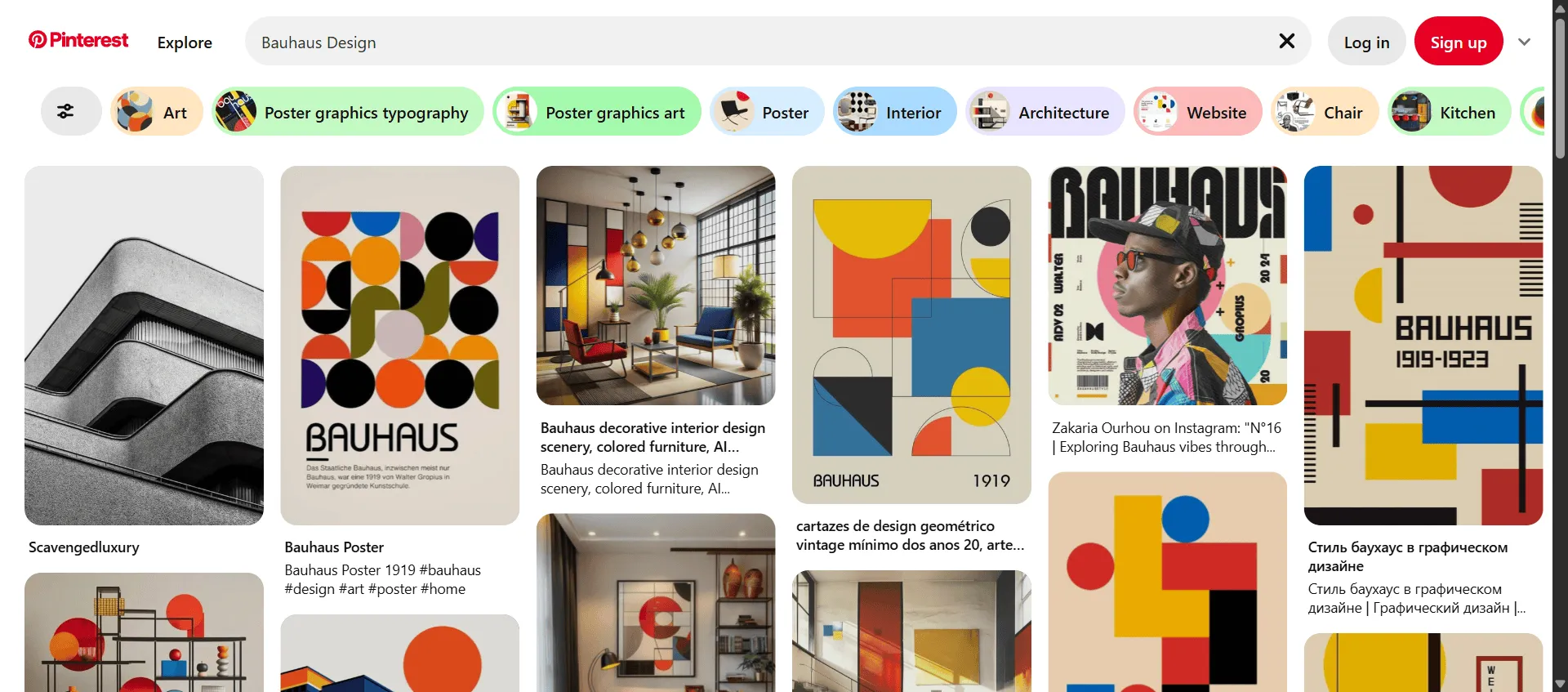
Strips design down to functional essentials, using bold geometric shapes, primary colors, and minimal ornamentation, with a focus on form following function and clarity. (Born from the German Art School active between 1919 and 1933).
Surrealism

Merges everyday objects with dreamlike imagery, tapping into the subconscious with visuals that don’t logically go together, sparking curiosity and challenging reality. (Coming about in the 1920s, it continues to influence design).
Art Deco
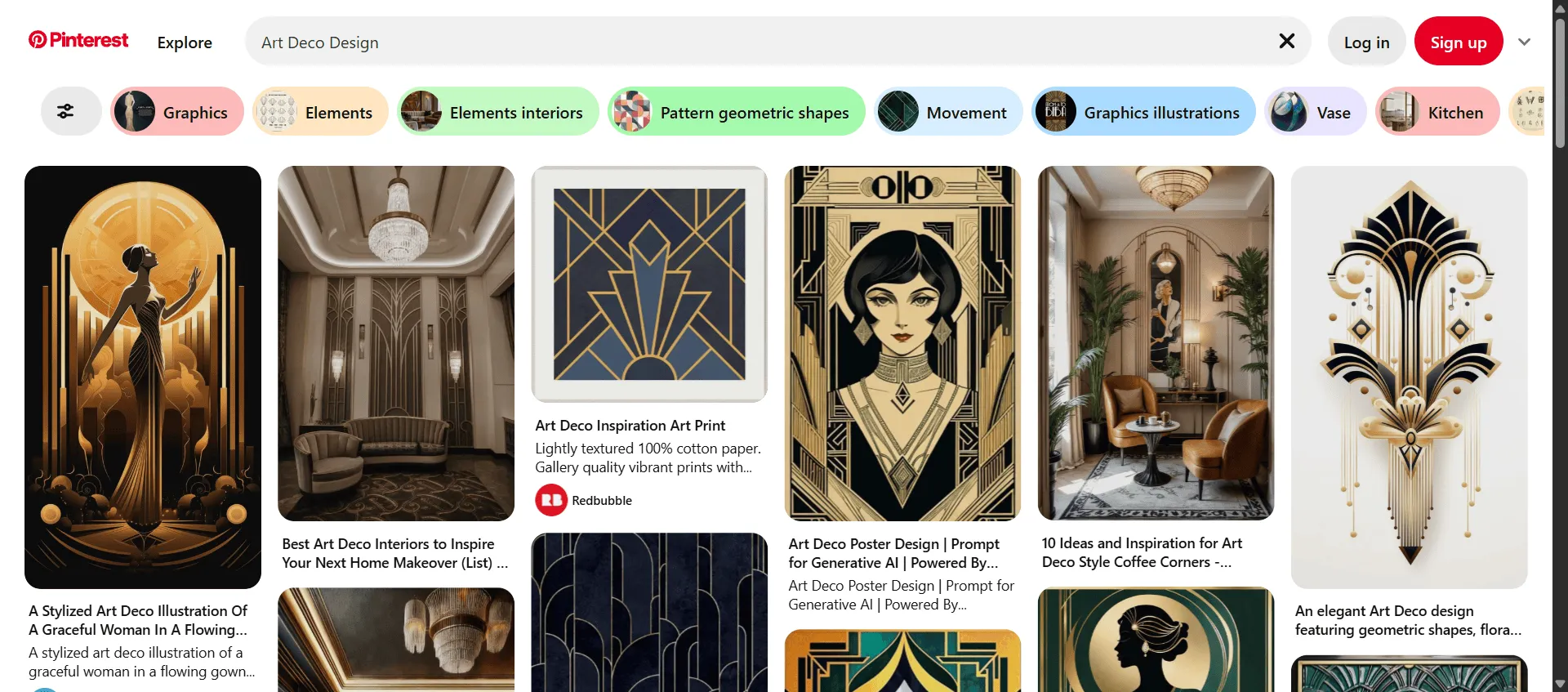
Sleek, geometric, and glamorous, featuring symmetrical patterns and metallic accents, embodying modern luxury and optimism from the 1920s and 30s. (Dominated the 1920s and 1930s).
Abstract Art (in Graphic Design)
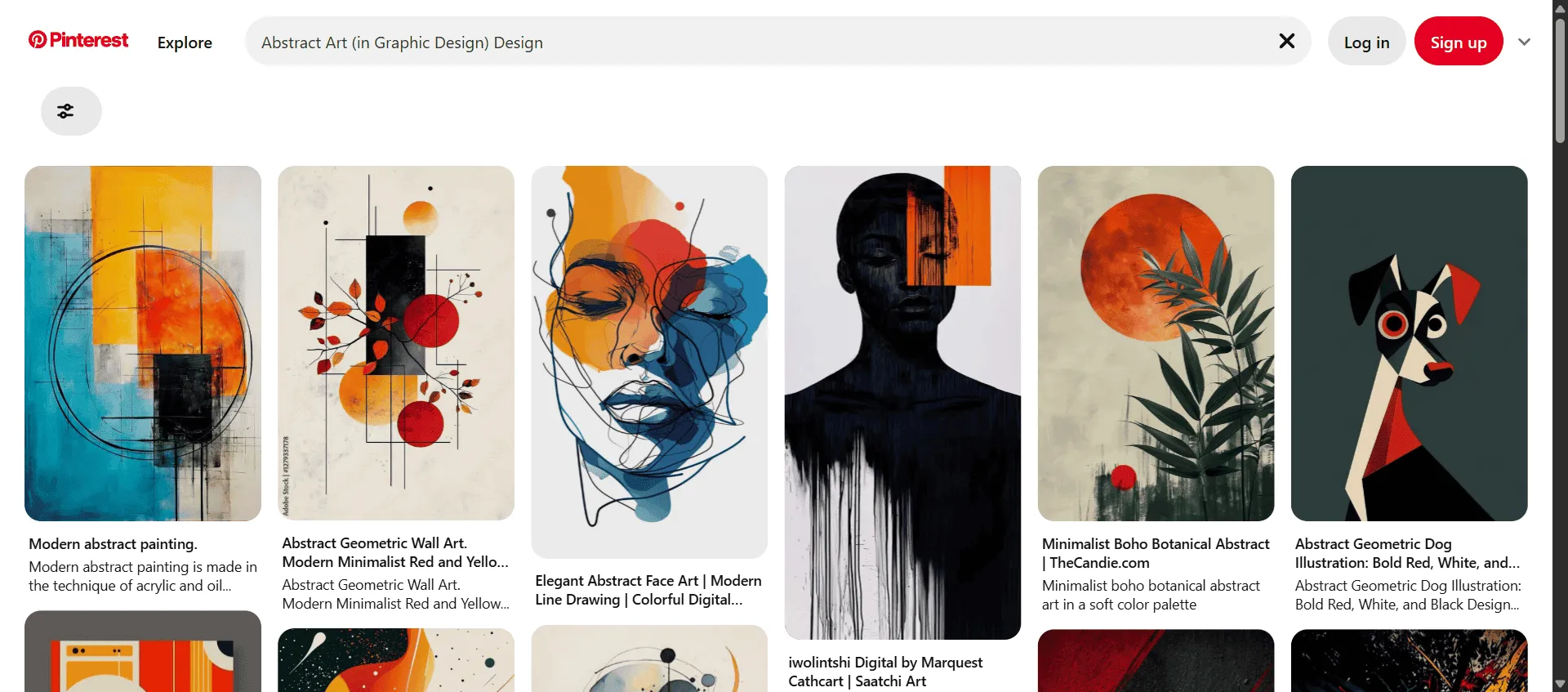
Focuses on non-representational forms, colors, and lines to create visual interest and evoke emotion rather than depicting recognizable objects. It can be geometric, organic, or expressive. (Emerged in the early 20th century, with different movements like Cubism and Constructivism).
Futurism (in Graphic Design)
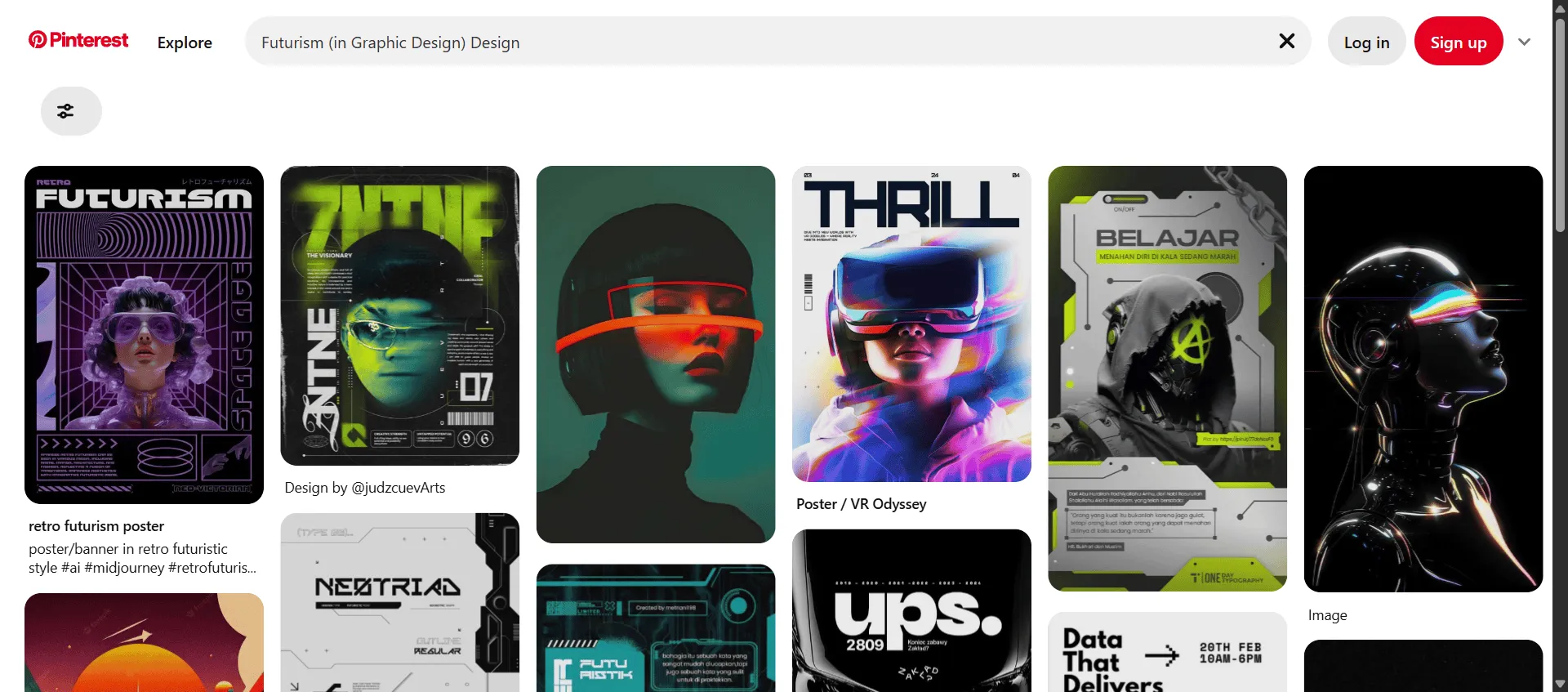
Characterized by dynamic lines, motion blurs, fragmented forms, and bold typography, aiming to convey speed, technology, and the excitement of the modern world. (An early 20th-century art movement, roughly 1909-1944).
Dadaism (in Graphic Design)
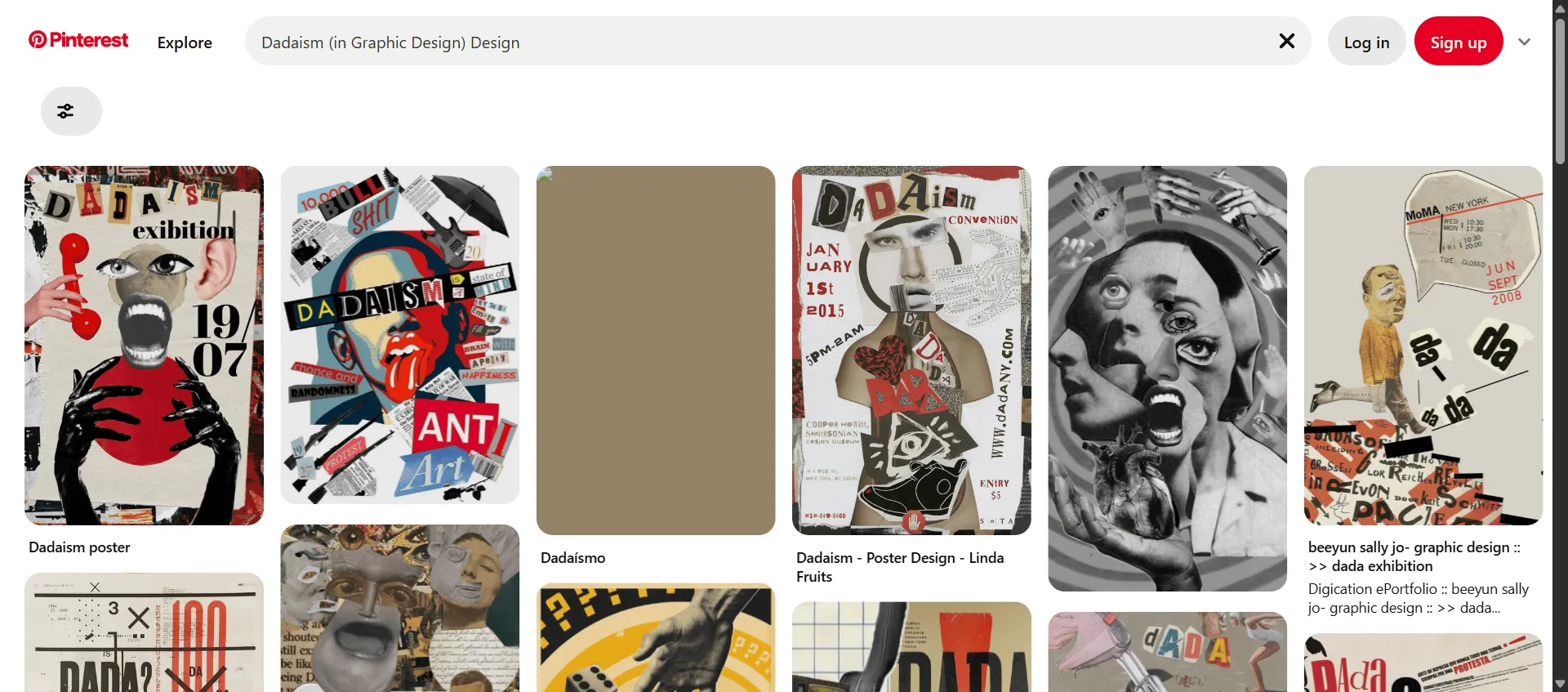
Embraces absurdity, collage, unconventional typography, and a rejection of traditional aesthetic norms. It’s often satirical and provocative. (An art movement that began around 1916).
Expressionism (in Graphic Design)

Distorts reality to convey strong emotions and subjective experiences. It often uses bold colors, dramatic lines, and exaggerated forms to evoke intense feelings. (An early 20th-century movement, roughly 1905-1920s).
Art Nouveau

Embraces flowy lines, organic shapes, and floral motifs with elegant, rounded typography, heavily inspired by nature and merging illustration seamlessly with type. (Kicked off in the late 19th century and lasted into the early 20th century).
Luxury Typography
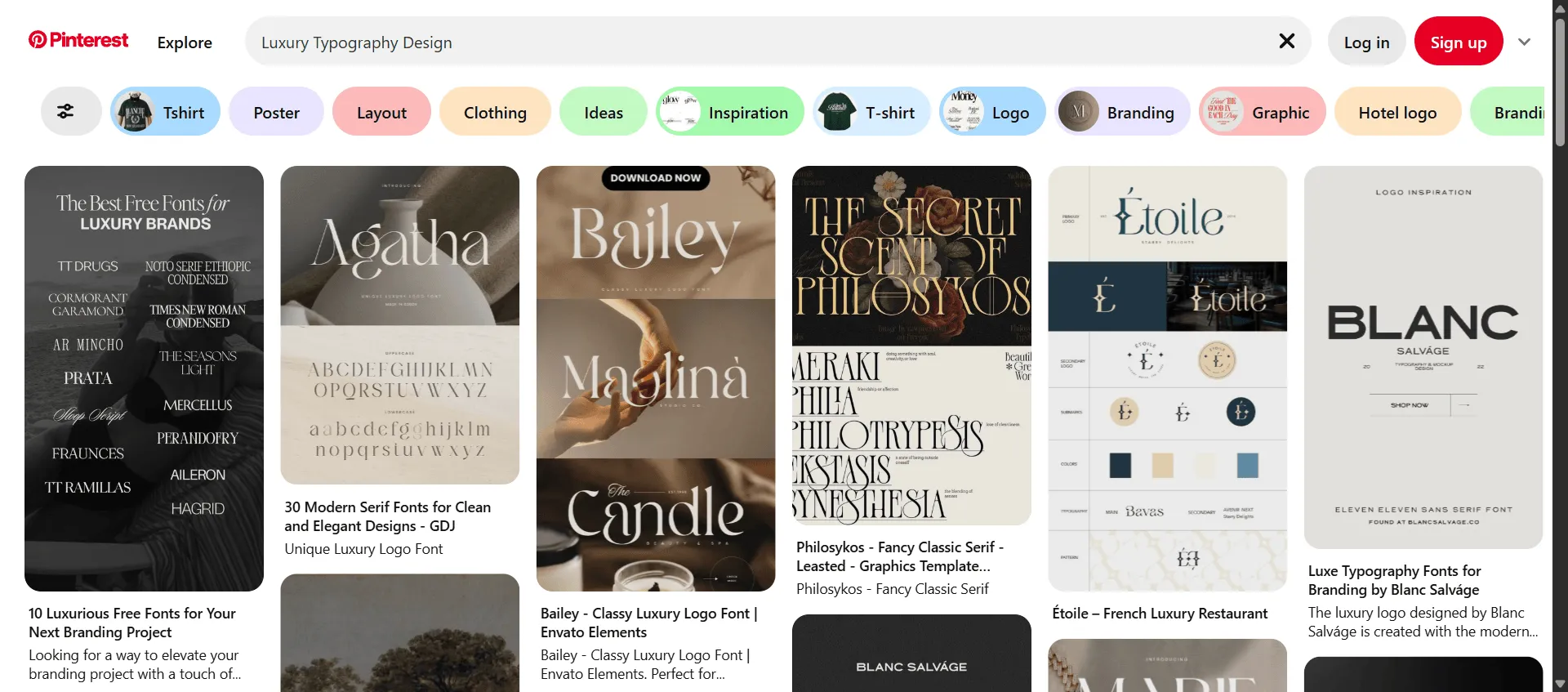
Super refined, custom typefaces with lavish scripts, elaborate ligatures, and intricate details, signaling a high-end, top-tier look. (While modern luxury typography is a current trend, its roots are in older calligraphic traditions, peaking commercially in the 20th century).
Bohemian (Boho)
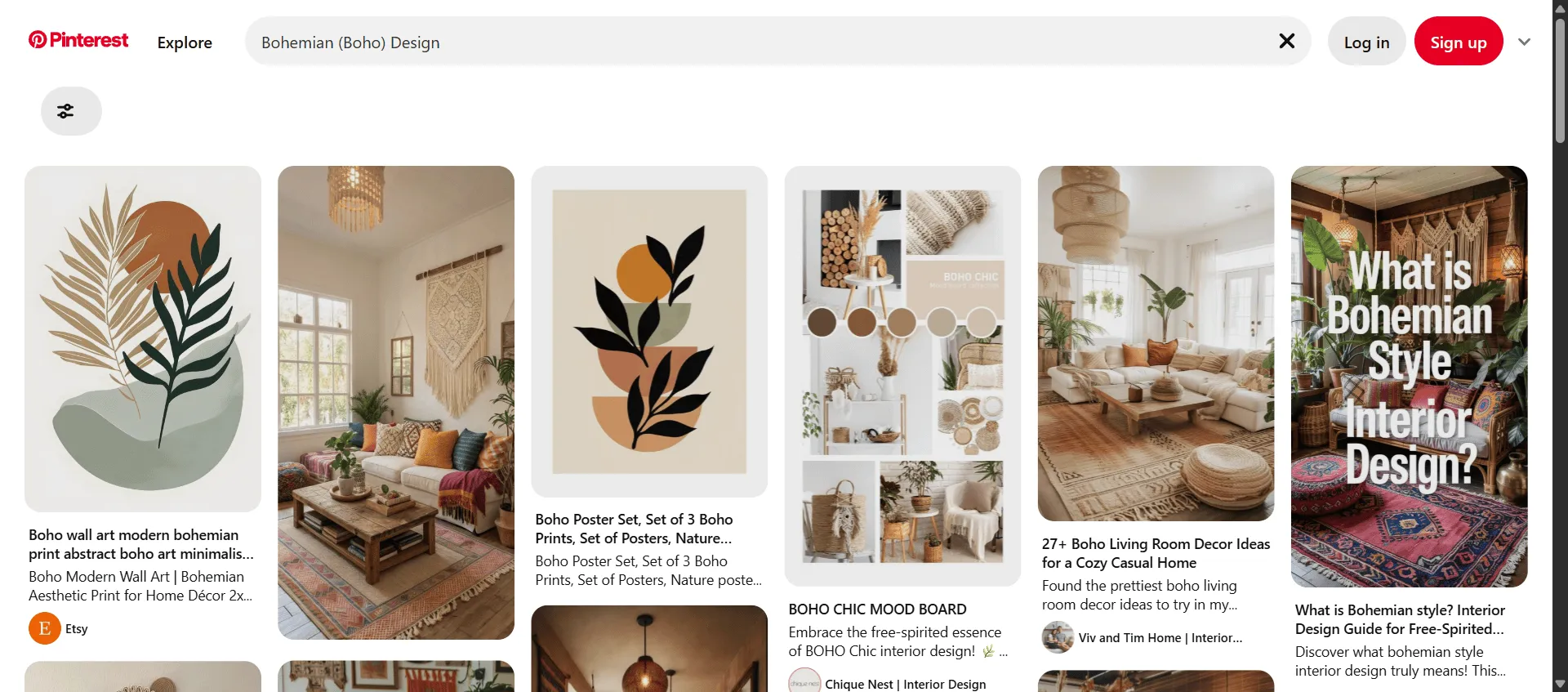
A blend of global influences with layered textures, earthy tones, muted vibrant palettes, and a laid-back, free-spirited, worldly travel vibe. (Dates back to 19th-century artist communities, hit mainstream in the 1960s).
Gothic
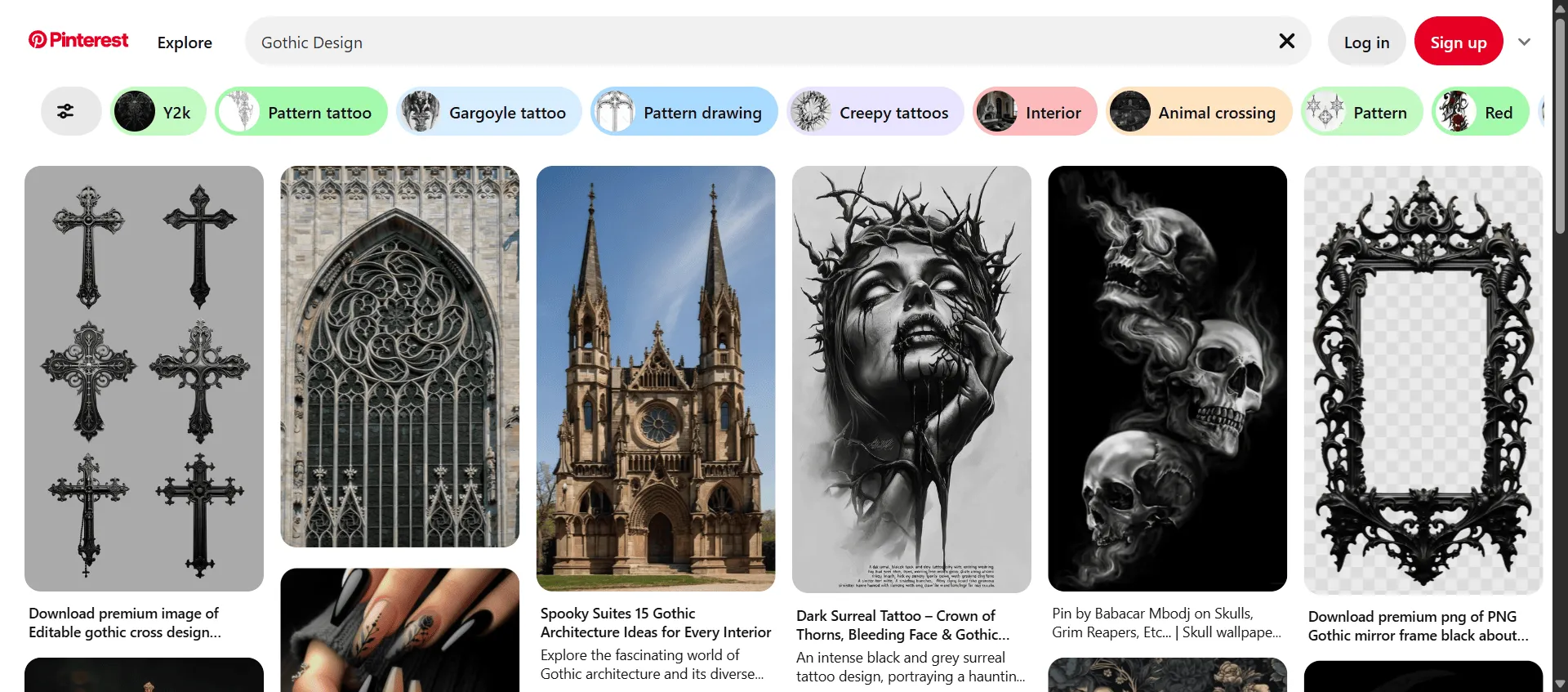
Features pointed arches, intricate carvings, and a dark aura, dramatic and can lean eerie or grand depending on the need, with a wide range from edgy band merch to vintage branding. (Architecture emerged in 12th-century Europe, with various revivals since).
Victorian Design

Wears ornate details, rich color schemes, and floral decorations, characterized by excess elegance and intricate motifs. (From the reign of Queen Victoria, spanning 1837 to 1901).
Pointillism

Arranges thousands of tiny dots that, from a distance, blend into a cohesive image, creating a distinct stippled appearance that can be mesmerizing up close. (Developed around the late 19th century).
Psychedelic Design
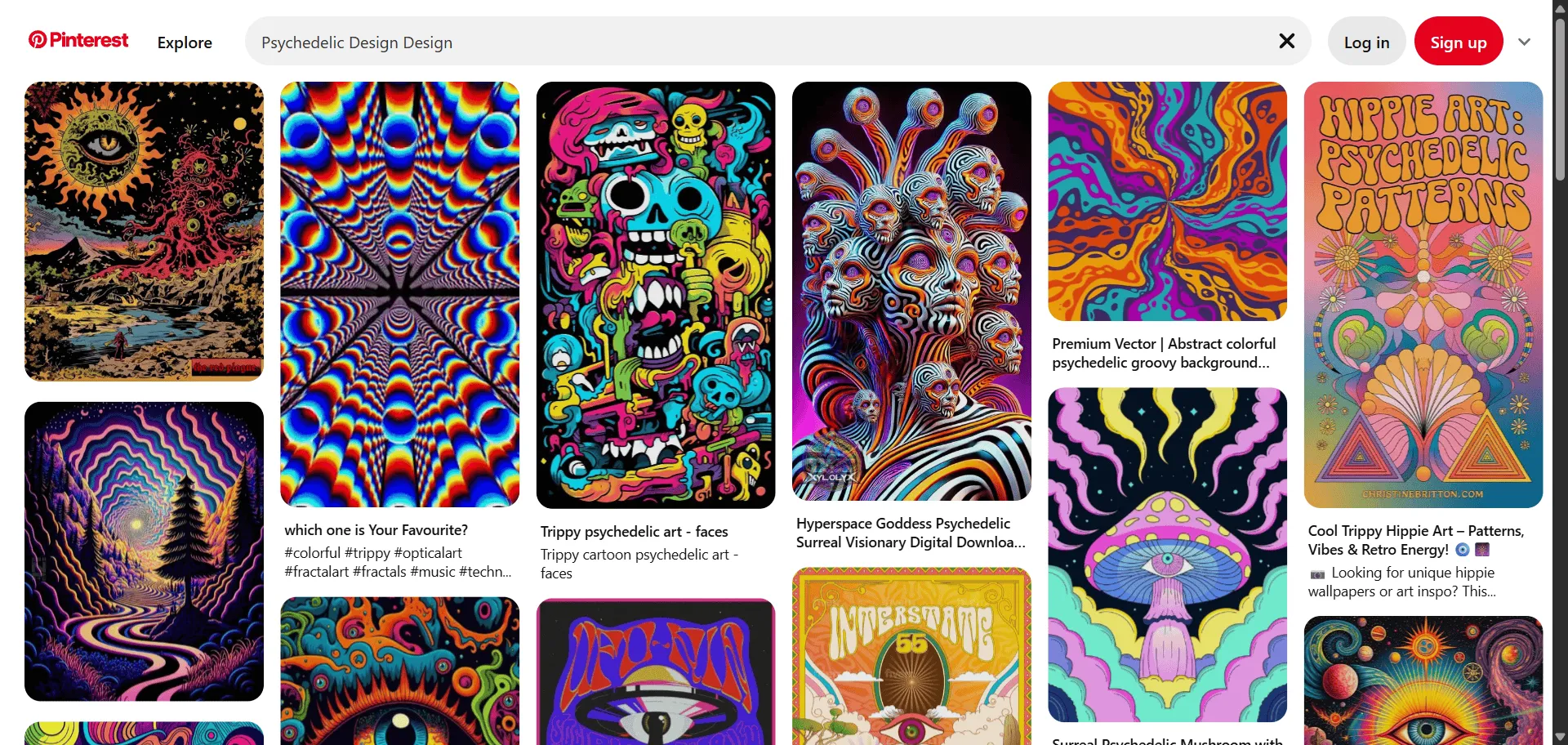
Bursting with vibrant, often clashing colors, swirling patterns, distorted typography, and surreal imagery. This style is heavily influenced by the 1960s counterculture and hallucinogenic experiences. (Popularized in the 1960s, drawing from earlier art movements).
Grunge

Features distressed textures, torn edges, muted or desaturated colors, and a raw, unpolished, often rebellious aesthetic. It evokes a sense of decay or counter-culture. (While grunge music originated in the 80s, its graphic design style truly solidified and became widespread in the late 80s and 90s).
Graffiti
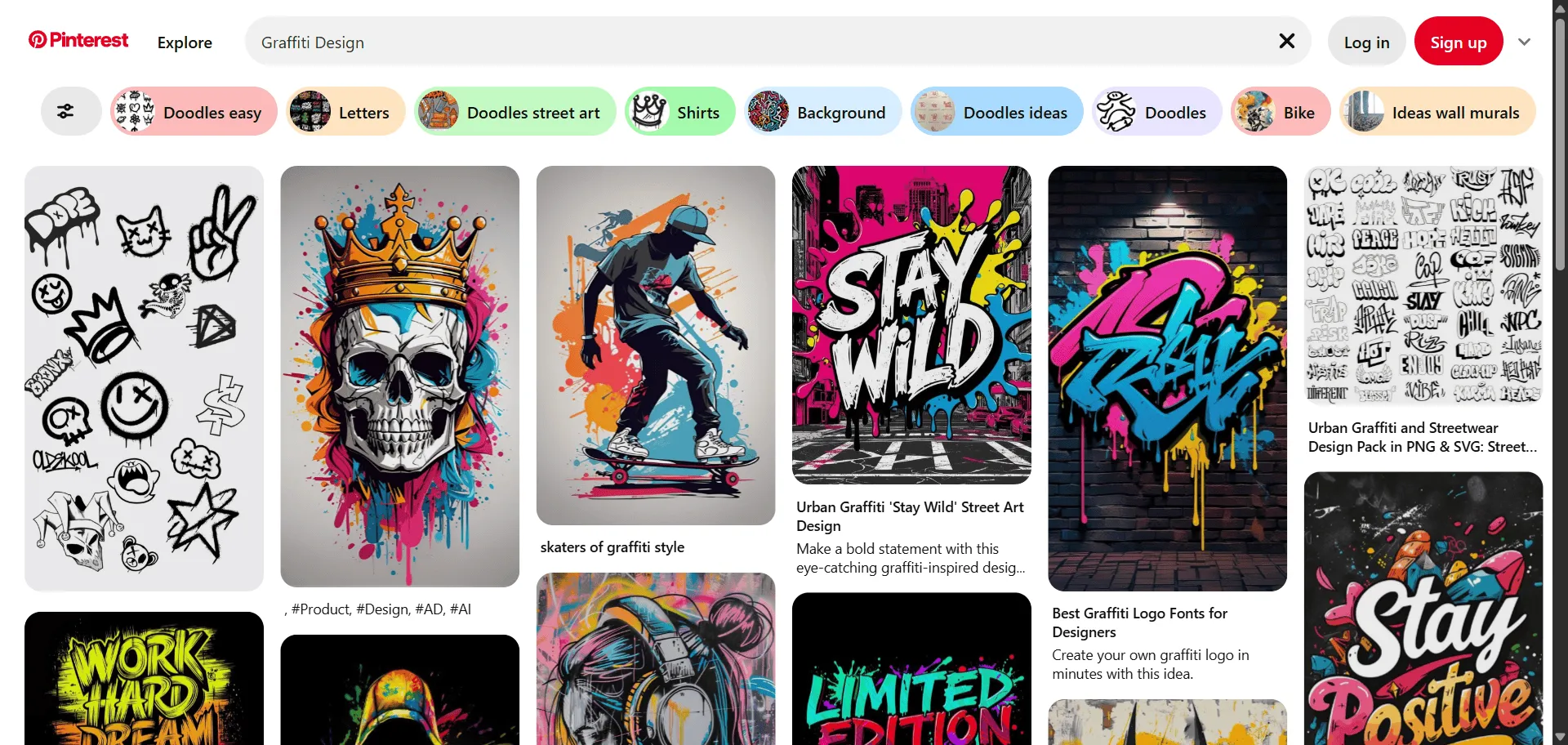
Borrows trends from urban street art, showcasing bold, spray-painted letters, bright colors, gritty textures, and a rebellious, energetic, and personality-filled aesthetic. (Modern graffiti took off in the 1960s during the hip-hop scene).
Tenebrism
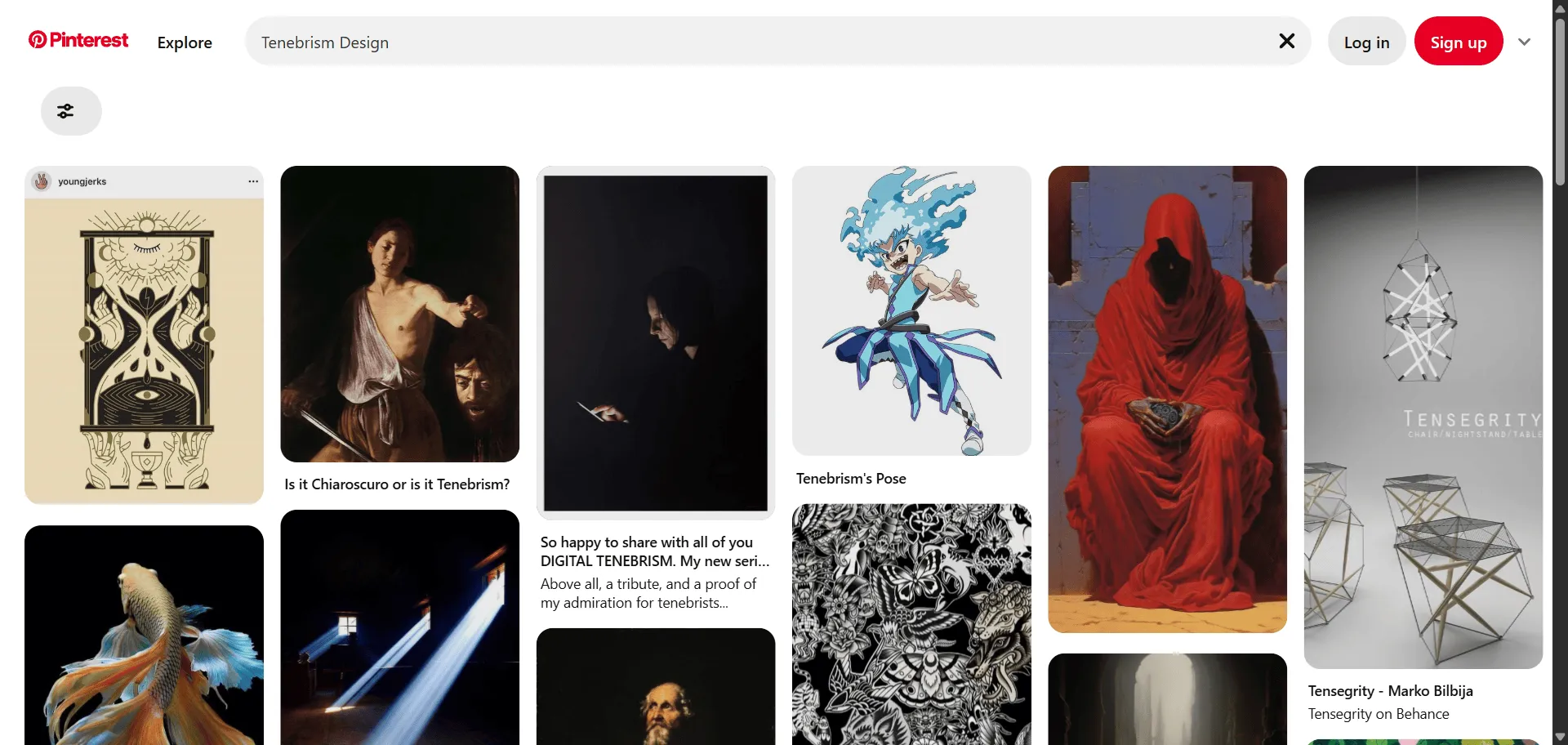
Hinges on extreme contrast between light and dark, creating a high-drama, spotlight look with intensely moody visuals that draw attention to brightly lit areas surrounded by deep shadow. (Technique comes from Baroque painting in the 17th century).
Baroque Style
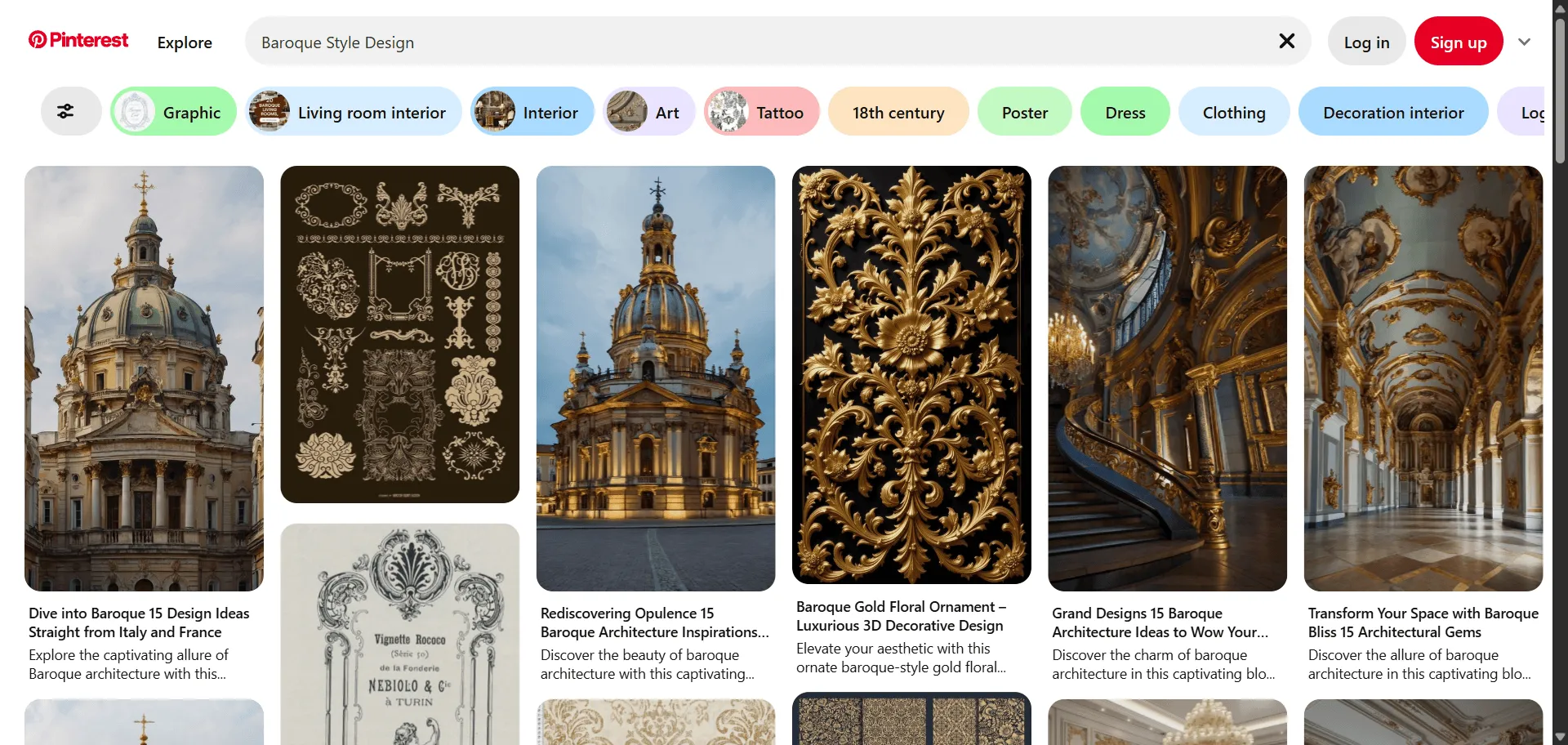
Characterized by dramatic details, lavish ornamentation, intense contrasts, and rich color palettes, creating a theatrical and opulent feel. (Flourished in Europe in the 17th century up through the mid-18th century).
Filigree
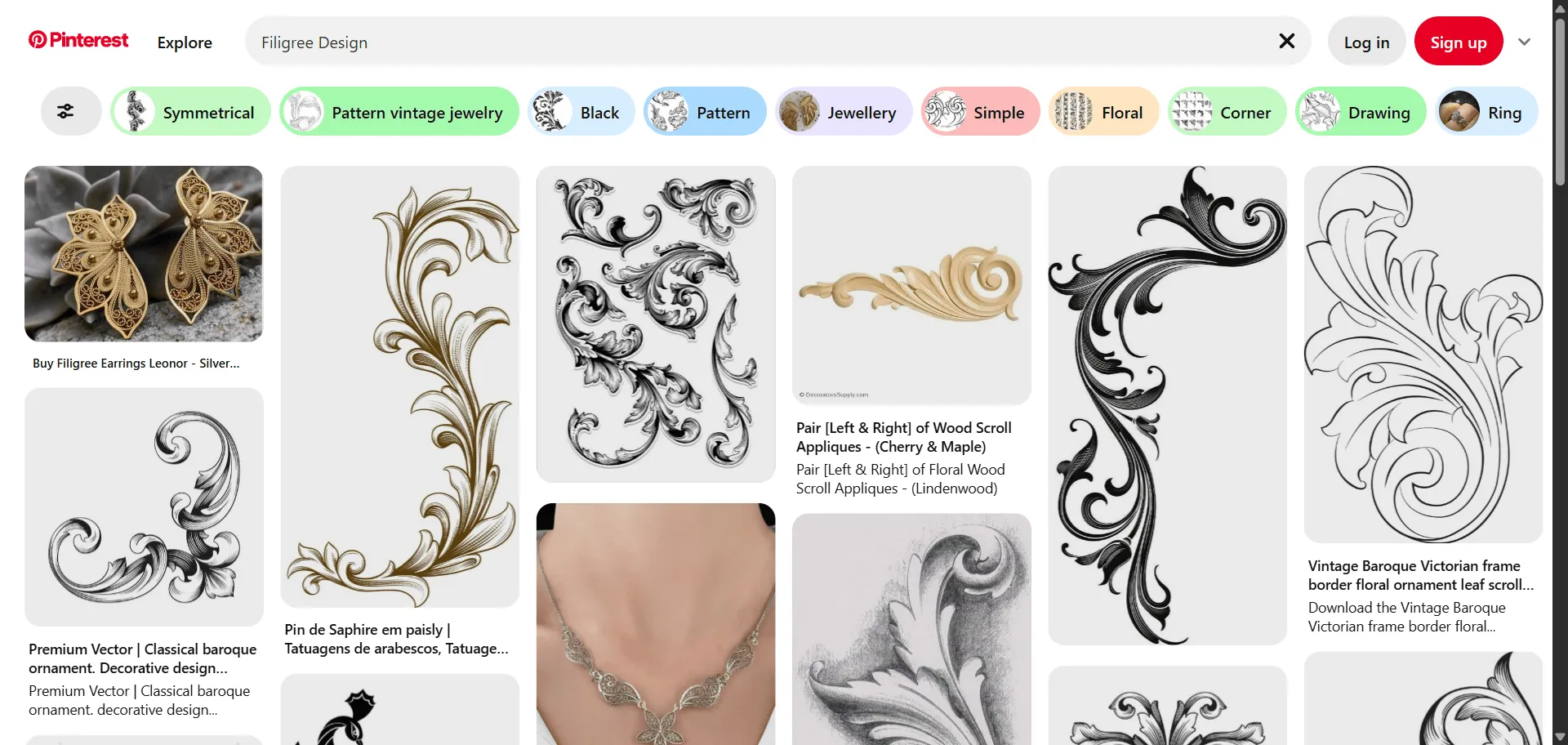
Intricate, lacy patterns, often resembling metalwork, marble, or woodwork, translated in graphic design to lavish scrollwork and swirling flourishes that signal elegance. (Its roots are in centuries-old metalwork, particularly 17th and 18th centuries in Europe).
Neoclassical Art
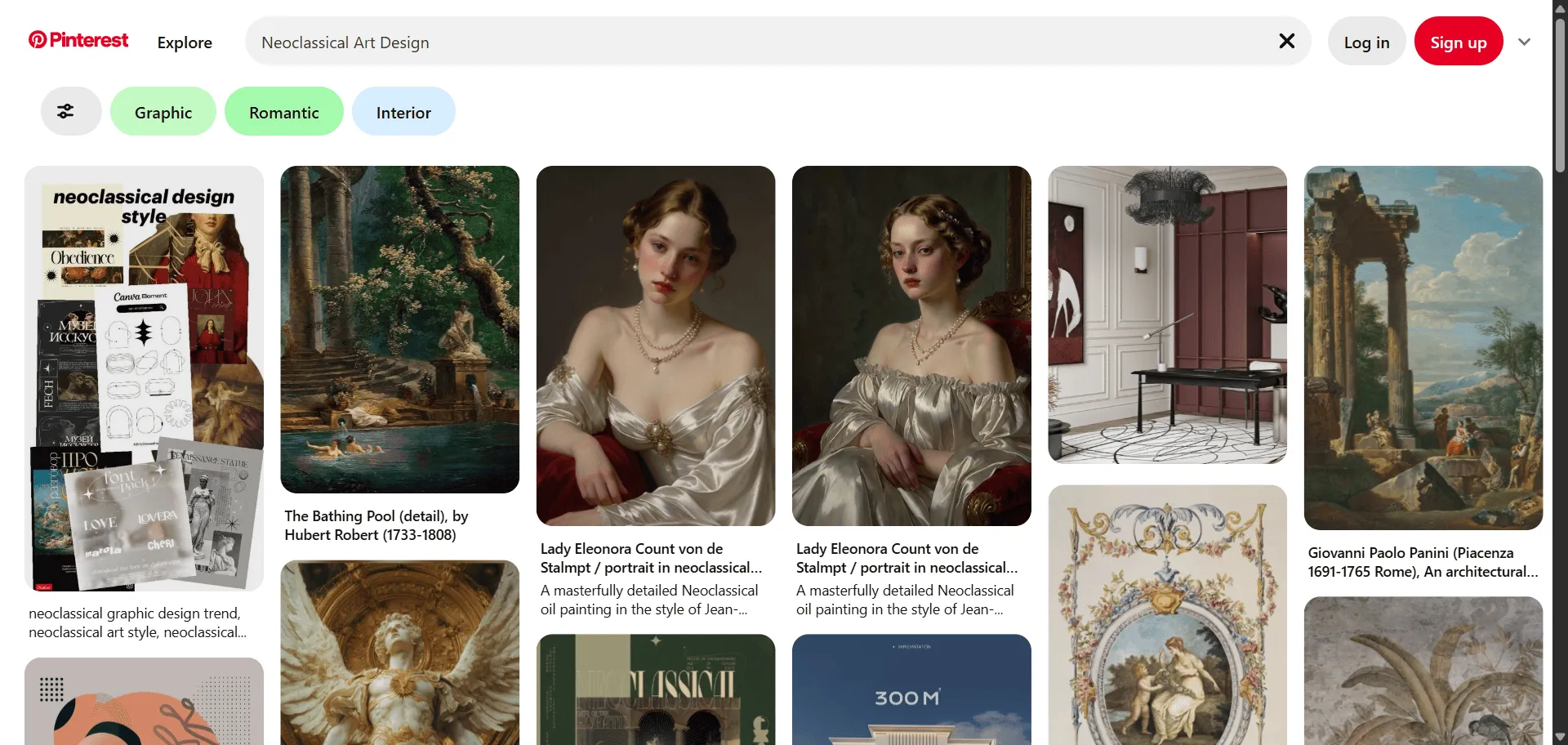
Mirrors the Enlightenment’s fascination with classical antiquity (ancient Greece/Rome), featuring grand, timeless vibes and an homage to historical art. (Historically came to be in the late 18th to 19th century).
Acanthus

Spotlights leafy patterns commonly found in ancient Greek and Roman columns and decorative borders, used for elegant print layouts and classical flair. (Rooted in ancient Greek and Roman design).
Kawaii
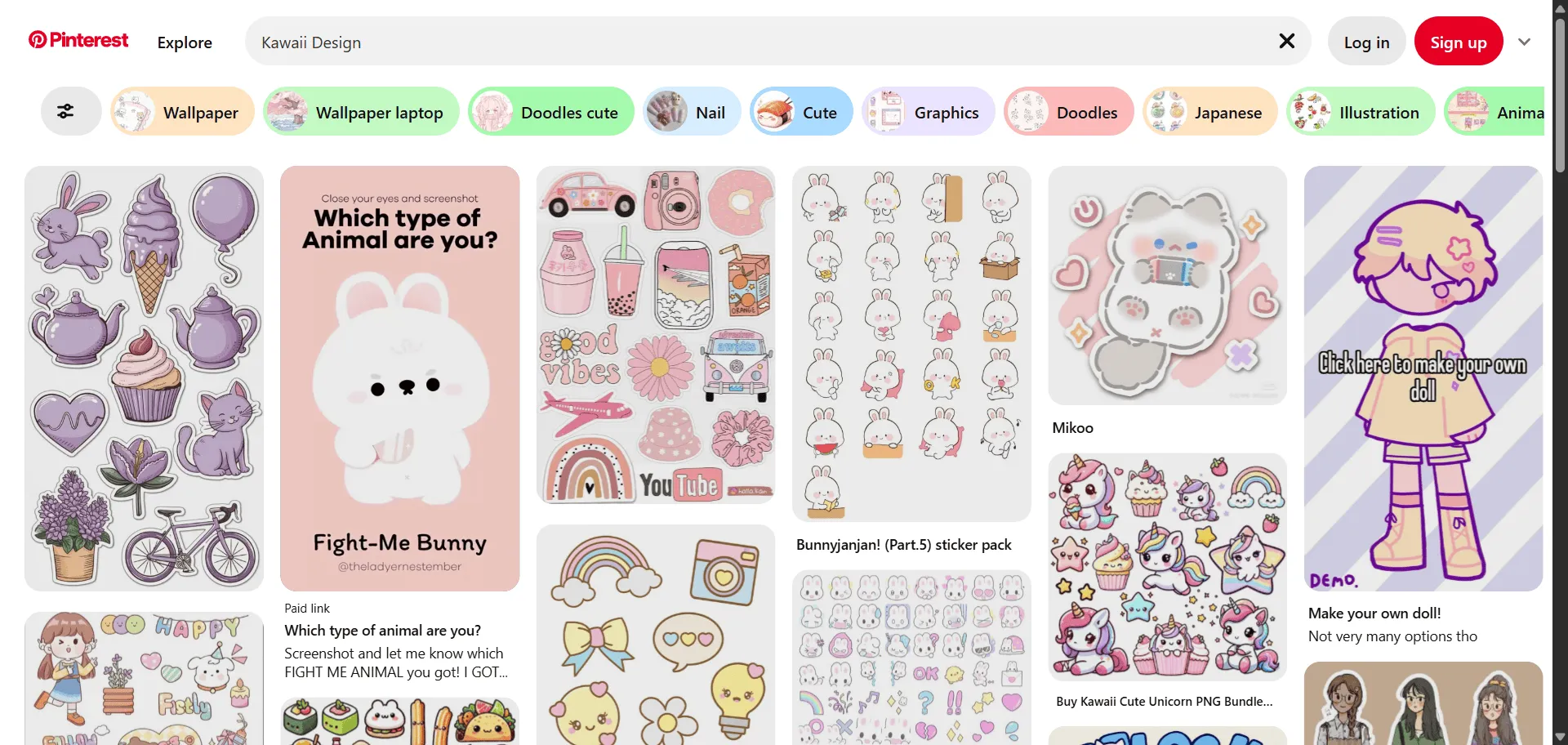
The Japanese concept of cute, featuring rounded shapes, pastel colors, and adorable, cartoon-like characters, all about an adorable look and feel. (While it emerged in Japanese pop culture in the 1970s, its global sweep is more modern).
Mixed Media

Combines different mediums like painting, photography, and collage into one unified composition, often using layering and unexpected juxtapositions to create eclectic visuals. (While artists have used mixed media forever, the late 20th century saw a surge in design adopting this style into the digital era).
Geometric Design
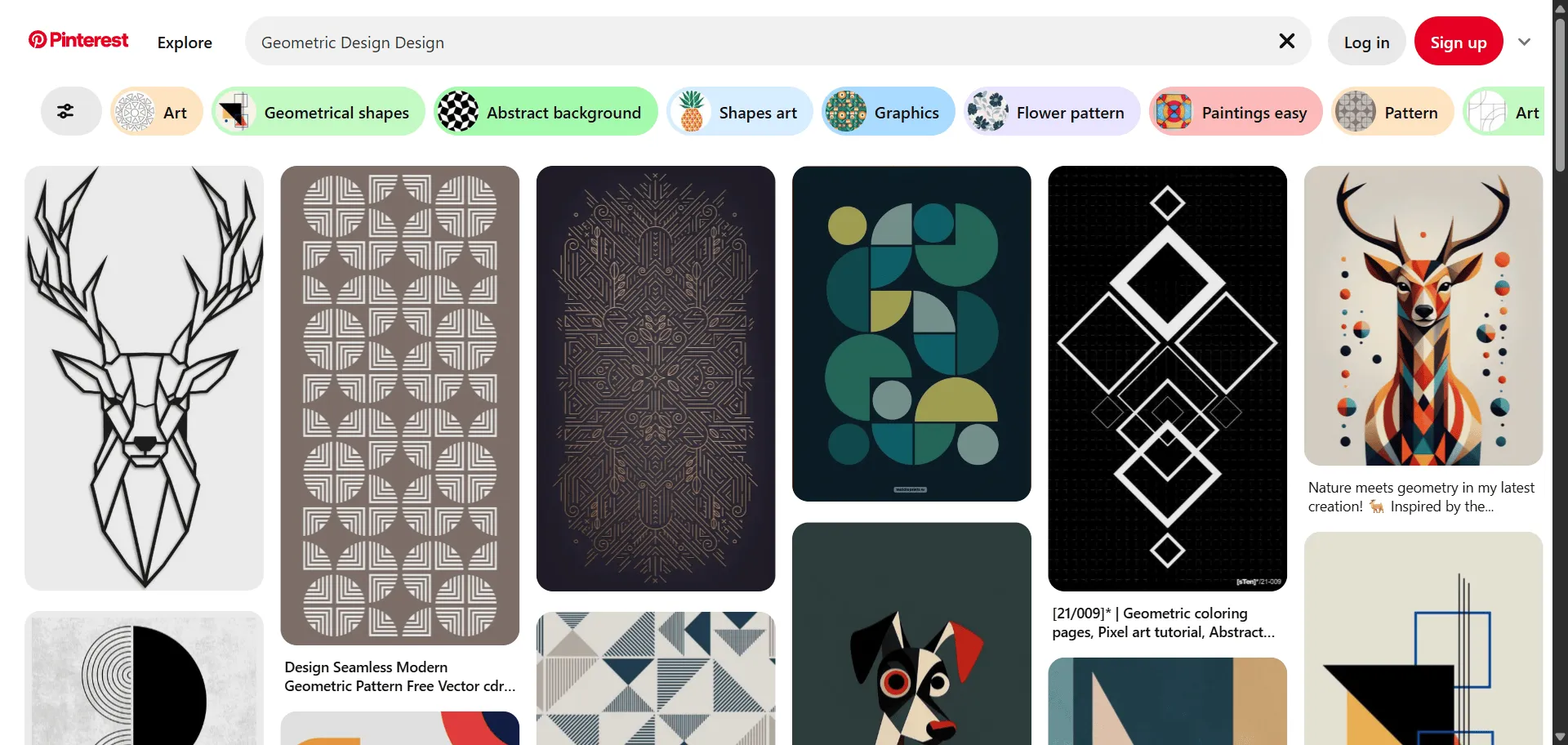
Utilizes strong geometric shapes (circles, squares, triangles) and lines to create structured and often abstract compositions. It can be precise and mathematical or more playful. (Foundational to many art movements throughout history, but consistently revisited and reinterpreted).
Art Brut / Outsider Art
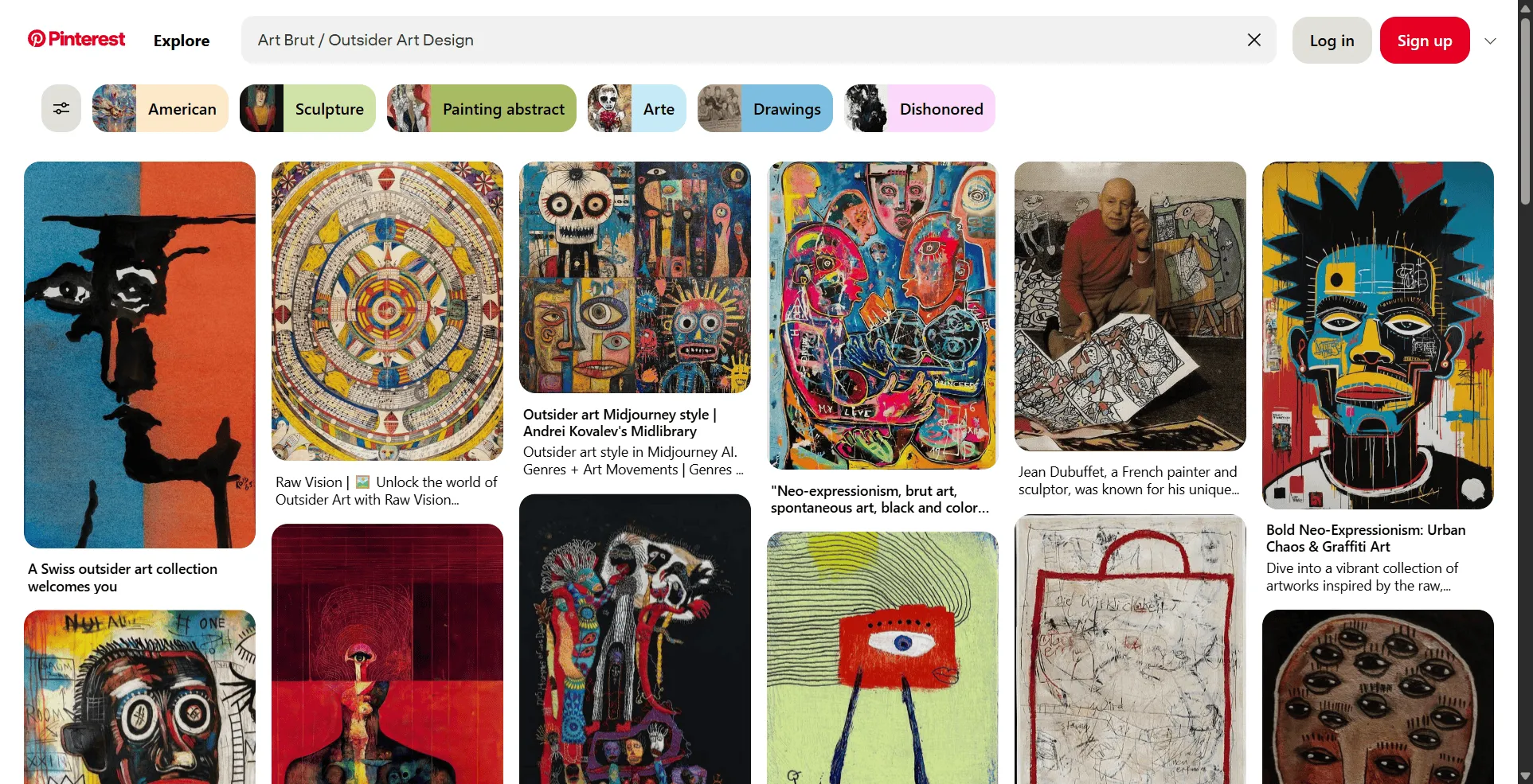
Raw, unconventional, and often visually impactful, inspired by creations from self-taught artists outside the mainstream art world. In graphic design, it can lead to a deliberately unrefined or naive aesthetic. (Conceptually, it defines art outside the mainstream, which has existed across all periods, but the term itself and its appreciation developed in the 20th century).
